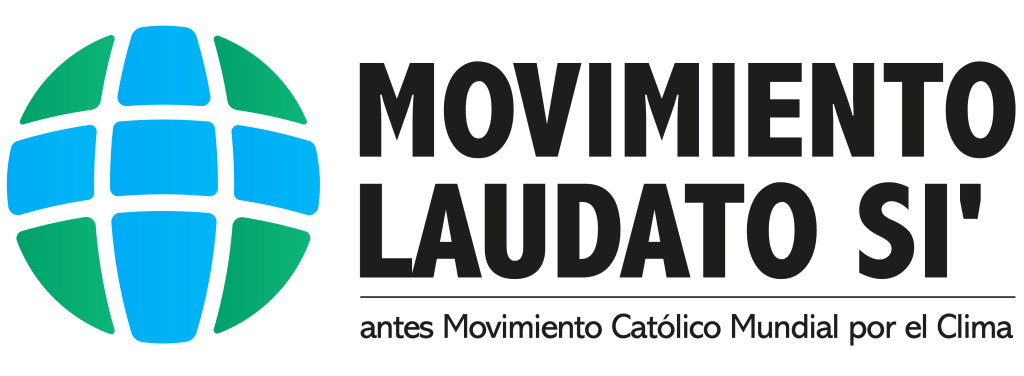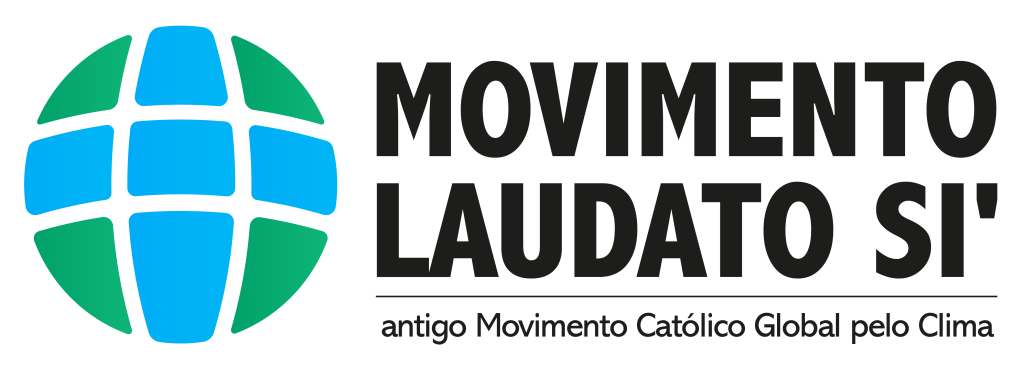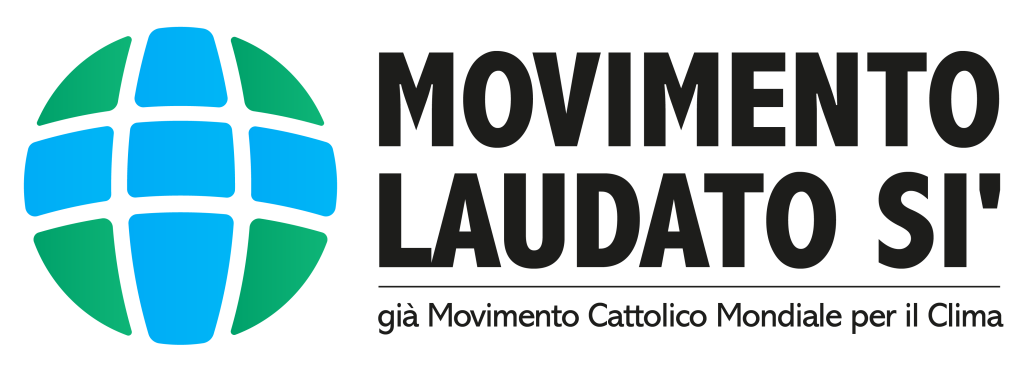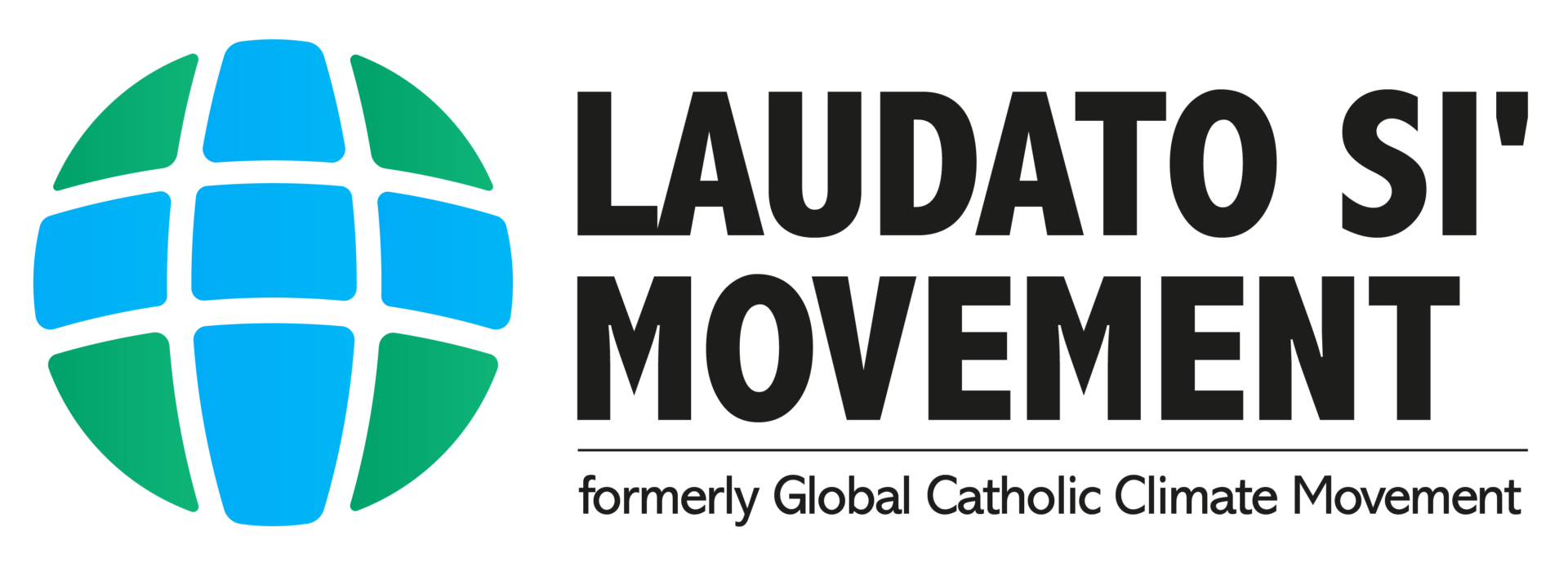
“The urgent challenge to protect our common home includes a concern to bring the whole human family together to seek a sustainable and integral development, for we know that things can change” (LS 13).
Our Mission
To inspire and mobilize the Catholic community to care for our common home and achieve climate and ecological justice, in collaboration with all people of good will.
Our Name
Laudato Si’ has been and continues to be the cornerstone of our movement, even as the Magisterium of the Church has continued to evolve with texts such as Querida Amazonia and Fratelli Tutti. Laudato Si’ is just one milestone in the long tradition of Catholic Social Teaching, a tradition we embrace wholeheartedly; but Laudato Si’s distinctive theme, “care for our common home,” makes it a milestone that has touched our hearts profoundly and brought us together to advance our mission to care for our imperiled planetary home. In fact, in the spirit of an integral ecology, many of our key initiatives are named after the encyclical: LS Animators, LS Week, LS Circles, LS Generation, LS Retreats, and more. We also humbly acknowledge that there is a lot of Laudato Si’ action taking place outside of our movement, starting with the Vatican’s own Laudato Si’ Action Platform which we actively support together with many others. We are delighted with so much life inspired by the encyclical and Querida Amazonia.
Our Identity
We are a spirit-led movement that brings Catholics together to accomplish our stated mission, in collaboration with all people of good will. The movement brings together a broad range of Catholic organizations and grassroots members from all over the world. These members walk together in synodality and communion with the universal Church on a journey of ecological conversion. Striving for unity in diversity, organizational and grassroots members come together to pray, collaborate and mobilize in response to “the cry of the earth and the cry of the poor.” Guided by a spirit of subsidiarity, when the timing and context are right, together they create or engage with local Laudato Si’ Circles and Chapters and connect with the global movement in a wide range of initiatives to bring Laudato Si’ to life.
Our Members
LSM is a hybrid movement. It can be visualized as a tree with two main branches housing its members: (1) Member Organizations and (2) Grassroots Members: LS Animators and LS Circles.
Chapters bring together both types of members.

Our Values

Grounded in faith
Our Catholic faith motivates us to act. Laudato Si’ inspires our mission. As followers of Jesus, our decisions are guided by Scriptures and Catholic Social Teaching. We serve the Church by lifting up the integrity of creation and recognizing the value of caring for God’s creation in our faith tradition and our Christian lives.

Committed to spiritual transformation

Caring for one another

Being prophetic

Taking an integral approach

Cultivating unity within diversity

Being in the Church and in the world

Building bridges

Embracing contemplation and action
Living in hope
Strategic Goals
LSM has three strategic goals which are the guiding stars for all of our efforts to bring Laudato Si’ to life:
1 – Ecological Conversion
To encourage a change of heart of the Catholic faithful and motivate a more passionate concern for our common home, enshrining creation care as a Catholic priority.
2 – Full Sustainability
To help the Catholic community lead by example by embodying the “Less is More” motto and shrinking its footprint to zero, in line with the urgency of the climate and ecological crises.
3 – Prophetic Advocacy
To mobilize the Church to raise a prophetic voice for climate and ecological justice, calling for bold policies to accomplish the Paris Agreement’s goal of 1.5C and halt biodiversity collapse.
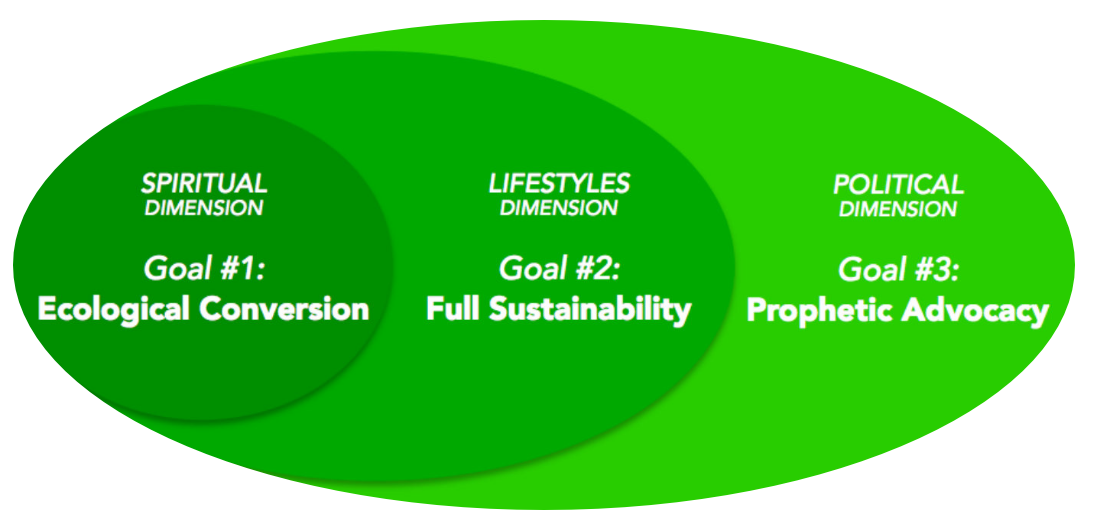
Ecological conversion
Sustainability
Advocacy
Our Story
Laudato Si’ Movement was born in 2015
Laudato Si’ Movement was born in 2015 and is the fruit of a kairos – the Greek word used in the Gospel to express “an opportune moment.” The kairos of 2015 was the combination of two transformative events that would shape how the Church and humanity responded to the ecological crisis: the Laudato Si’ encyclical release and the Paris Climate Agreement.
First, Pope Francis wrote and released the encyclical letter “Laudato Si’: On Care for Our Common Home,” the first-ever papal encyclical devoted to the crisis of our planetary home. Inspired by his namesake, St. Francis of Assisi and his deep communion with all Creation (best captured in the Canticle of the Creatures that inspired the encyclical’s title), the Pope issued a powerful appeal to the Church and “all people of good will” to urgently come together and respond to “the cry of the earth and the cry of the poor.”
Second, with the backdrop of increasingly starker warnings from the scientific community about the severity of the climate emergency, leaders from nearly 200 nations gathered at the U.N. Paris Climate Summit (COP21) to agree and sign the Paris Agreement. After 21 years of failed negotiations, nations of the world had a deadline to finally agree on a common plan that would tackle the climate crisis before it was too late.
Philippines
Months before those two events (Laudato Si’ was released in June and the Paris Climate Summit took place in December 2015), in the midst of the momentum that was building and the wide media coverage anticipating both events, Laudato Si’ Movement was launched on January 15, 2015, inspired by the Holy Spirit. That was the day Pope Francis arrived in the Philippines for a highly symbolic trip that would feature a visit to Tacloban, the epicenter of the Super Typhoon Haiyan. The disaster killed more than 10,000 people and left 13 million homeless.
Haiyan became a symbol of the climate crisis as it was the strongest storm ever recorded, and scientists explained that it was intensified by climate change. As if emphasizing the urgency of “the signs of the times,” another typhoon hit Tacloban the same day that Pope Francis visited the town (January 17), reminding him and the Church how poor countries like the Philippines are the ones that suffer the most from the unjust climate crisis. The choice of the Philippines for LSM’s foundation has marked the movement’s commitment to hear “the cry of the Earth and the cry of the poor.”
During his Philippines trip, Pope Francis was hosted by Cardinal “Chito” Tagle, who as Archbishop of Manila was LSM’s foundational episcopal sponsor and an essential companion for the journey ahead. The Archdiocese of Manila and some Philippine religious orders were part of the foundational group of 17 organizations and 12 leaders from all continents that came together to form LSM. Soon before, sparked by the momentum of the People’s Climate March of September 2014, the group started gathering in December 2014 through weekly Skype calls to coordinate a united Catholic plan to support the upcoming papal encyclical that was being reported by the press – we didn’t know its name back then! – and raise the voice of the Church to call for climate justice and an ambitious agreement at the Paris Climate Summit.
St. Francis
The founding group chose St. Francis of Assisi as the movement’s patron saint, recalling that he is the patron saint of ecology (it’s worth noting that several Franciscan organizations were LSM founding members), and issued a foundational statement that read:
“The Global Catholic Climate Movement is a first-of-its-kind international coalition of Catholics from many nations, continents, and walks of life. We are laity, religious, and clergy, theologians, scientists, and activists from Argentina, the Philippines, the United Kingdom, Kenya, Australia, the United States, and many other nations. We are united by our Catholic faith and our work in various roles and organizations on climate change issues… Pope Francis will be issuing an encyclical about caring for the environment. With this statement, we the undersigned now seek to help bring these teachings of the Church to the world.”
Climate justice
The first year of LSM was an unexpected explosion of energy and life. The initial group of founding members quickly grew to include 300 Catholic organizations by the end of the year and a vast network of grassroots leaders who coalesced around the goal of supporting the encyclical and mobilizing for an ambitious Paris Climate Agreement. A tiny secretariat, which is the central team supporting the movement, was set up with the support of the Franciscan Action Network. The secretariat initially included Tomás Insua and Christina Leaño, who worked out of university libraries in Boston for the first two years, and Igor Bastos and Fabian Campos, who worked out of Franciscan and Caritas offices, coordinating Latin American efforts.
Petition
Members of the founding Steering Committee had their first in-person gathering in Rome in May 2015, on the occasion of a pre-encyclical preparatory meeting with Vatican officials and Caritas leaders from different continents. The Rome trip included an inspiring encounter with Pope Francis, in which he encouraged the movement to prepare for the upcoming encyclical and shared that he supported the Catholic Climate Petition that LSM had just launched.
As stated in the petition text, LSM’s goal was to push governments to adopt the ambitious goal of limiting global temperature increase to 1.5°C, rather than the less ambitious goal of 2°C that the most polluting nations were backing. Energized by the Laudato Si’ release in June 2015, more than 900,000 Catholics signed LSM petition. The effort was largely driven by the Church in the global south, especially in the Philippines, where Cardinal Tagle helped the petition receive widespread support.
The petition signatures were symbolically carried by Filipino “climate pilgrim” Yeb Saño, a member of LSM’s founding board, from the Vatican to Paris in a prophetic two-month pilgrimage. Saño hand-delivered the signatures in deeply moving interfaith events with the high-level officials who hosted the COP21 summit: French President Francois Hollande and UN climate chief Christiana Figueres.
Eventually, after two weeks of frenetic negotiations and huge pressure from the climate movement, including from the memorable Global Climate March that saw 40,000 Catholics participate, the Vatican and many others, the negotiating block of the poorest nations successfully enshrined the 1.5°C goal in the Paris Agreement. The miracle had happened, “for nothing will be impossible for God” (Luke 1:37). This 1.5°C victory, in which we Catholics had an important role, set an ambitious bar for all climate action to follow.
After the hectic ride of 2015, the following year saw LSM start what have become some of the cornerstones of its holistic approach: the Laudato Si’ Animators formation program, Season of Creation celebrations, prophetic initiatives, such as the fossil fuel divestment campaign, and creative projects that raise awareness about Laudato Si’, such as the providential screening of a Pope video to three million World Youth Day pilgrims at Krakow.
Transforming
In subsequent years, the movement has continued to expand throughout the globe through a growing number of Laudato Si’ Animators, Circles, Chapters and Member Organizations, all of which continue to drive transformative action to care for our common home. In terms of the movement’s structures, the Steering Committee evolved to have co-chairs, Marianne Comfort (Sisters of Mercy) and Christina Leaño, and a formal legal entity and Board of Directors were set up in 2017, chaired by Amy Woolam Echeverria (Columban Missionaries),
following a planning meeting in Assisi with all LSM bodies (which included a new encounter with the Pope). Soon after, the Secretariat’s main office was relocated to Rome to better serve the Church to “live Laudato Si’” by deepening the collaboration with the Vatican and Rome-based Catholic organizations. And in 2019, LSM established an Episcopal Advisory Council with cardinals from different continents who have been accompanying the movement in its journey.
Adapting
The year 2020 was unlike any other for the world and for the movement. At the beginning of the year, on the occasion of the movement’s fifth anniversary, LSM’s leadership and board were humbled and supremely grateful to have a private audience with Pope Francis. The meeting, which also included Cardinal Tagle, served as a beautiful opportunity to thank Pope Francis for his leadership and share the abundant fruits of the first five years of LSM’s journey.
A few months later, the COVID-19 pandemic forced LSM to scrap its plans to organize events to celebrate the fifth anniversary of Laudato Si’ in May. Instead, the movement remained nimble and, along with hundreds of thousands of people on six continents, united online to pray and reflect on how we can build a better world. With strong support from Pope Francis, LSM and its many members and partners hosted “Laudato Si’ Week,” a week’s worth webinars that helped people all over the world honor the world-changing encyclical and prepare for the next five years in our continued prayerful journey for climate justice.
GCCM announces its new name: Laudato Si' Movement
Our Story
Start
Laudato Si’ Movement was born in 2015
Laudato Si’ Movement was born in 2015 and is the fruit of a kairos – the Greek word used in the Gospel to express “an opportune moment.” The kairos of 2015 was the combination of two transformative events that would shape how the Church and humanity responded to the ecological crisis: the Laudato Si’ encyclical release and the Paris Climate Agreement.
First, Pope Francis wrote and released the encyclical letter “Laudato Si’: On Care for Our Common Home,” the first-ever papal encyclical devoted to the crisis of our planetary home. Inspired by his namesake, St. Francis of Assisi and his deep communion with all Creation (best captured in the Canticle of the Creatures that inspired the encyclical’s title), the Pope issued a powerful appeal to the Church and “all people of good will” to urgently come together and respond to “the cry of the earth and the cry of the poor.”
Second, with the backdrop of increasingly starker warnings from the scientific community about the severity of the climate emergency, leaders from nearly 200 nations gathered at the U.N. Paris Climate Summit (COP21) to agree and sign the Paris Agreement. After 21 years of failed negotiations, nations of the world had a deadline to finally agree on a common plan that would tackle the climate crisis before it was too late.
Philippines
Philippines
Months before those two events (Laudato Si’ was released in June and the Paris Climate Summit took place in December 2015), in the midst of the momentum that was building and the wide media coverage anticipating both events, Laudato Si’ Movement was launched on January 15, 2015, inspired by the Holy Spirit. That was the day Pope Francis arrived in the Philippines for a highly symbolic trip that would feature a visit to Tacloban, the epicenter of the Super Typhoon Haiyan. The disaster killed more than 10,000 people and left 13 million homeless.
Haiyan became a symbol of the climate crisis as it was the strongest storm ever recorded, and scientists explained that it was intensified by climate change. As if emphasizing the urgency of “the signs of the times,” another typhoon hit Tacloban the same day that Pope Francis visited the town (January 17), reminding him and the Church how poor countries like the Philippines are the ones that suffer the most from the unjust climate crisis. The choice of the Philippines for LSM’s foundation has marked the movement’s commitment to hear “the cry of the Earth and the cry of the poor.”
During his Philippines trip, Pope Francis was hosted by Cardinal “Chito” Tagle, who as Archbishop of Manila was LSM’s foundational episcopal sponsor and an essential companion for the journey ahead. The Archdiocese of Manila and some Philippine religious orders were part of the foundational group of 17 organizations and 12 leaders from all continents that came together to form LSM. Soon before, sparked by the momentum of the People’s Climate March of September 2014, the group started gathering in December 2014 through weekly Skype calls to coordinate a united Catholic plan to support the upcoming papal encyclical that was being reported by the press – we didn’t know its name back then! – and raise the voice of the Church to call for climate justice and an ambitious agreement at the Paris Climate Summit.
St. Francis
St. Francis
The founding group chose St. Francis of Assisi as the movement’s patron saint, recalling that he is the patron saint of ecology (it’s worth noting that several Franciscan organizations were LSM founding members), and issued a foundational statement that read:
“The Global Catholic Climate Movement is a first-of-its-kind international coalition of Catholics from many nations, continents, and walks of life. We are laity, religious, and clergy, theologians, scientists, and activists from Argentina, the Philippines, the United Kingdom, Kenya, Australia, the United States, and many other nations. We are united by our Catholic faith and our work in various roles and organizations on climate change issues… Pope Francis will be issuing an encyclical about caring for the environment. With this statement, we the undersigned now seek to help bring these teachings of the Church to the world.”
Climate justice
Climate justice
The first year of LSM was an unexpected explosion of energy and life. The initial group of founding members quickly grew to include 300 Catholic organizations by the end of the year and a vast network of grassroots leaders who coalesced around the goal of supporting the encyclical and mobilizing for an ambitious Paris Climate Agreement. A tiny secretariat, which is the central team supporting the movement, was set up with the support of the Franciscan Action Network. The secretariat initially included Tomás Insua and Christina Leaño, who worked out of university libraries in Boston for the first two years, and Igor Bastos and Fabian Campos, who worked out of Franciscan and Caritas offices, coordinating Latin American efforts.
Petition
Petition
Members of the founding Steering Committee had their first in-person gathering in Rome in May 2015, on the occasion of a pre-encyclical preparatory meeting with Vatican officials and Caritas leaders from different continents. The Rome trip included an inspiring encounter with Pope Francis, in which he encouraged the movement to prepare for the upcoming encyclical and shared that he supported the Catholic Climate Petition that LSM had just launched.
As stated in the petition text, LSM’s goal was to push governments to adopt the ambitious goal of limiting global temperature increase to 1.5°C, rather than the less ambitious goal of 2°C that the most polluting nations were backing. Energized by the Laudato Si’ release in June 2015, more than 900,000 Catholics signed LSM petition. The effort was largely driven by the Church in the global south, especially in the Philippines, where Cardinal Tagle helped the petition receive widespread support.
The petition signatures were symbolically carried by Filipino “climate pilgrim” Yeb Saño, a member of LSM’s founding board, from the Vatican to Paris in a prophetic two-month pilgrimage. Saño hand-delivered the signatures in deeply moving interfaith events with the high-level officials who hosted the COP21 summit: French President Francois Hollande and UN climate chief Christiana Figueres.
Eventually, after two weeks of frenetic negotiations and huge pressure from the climate movement, including from the memorable Global Climate March that saw 40,000 Catholics participate, the Vatican and many others, the negotiating block of the poorest nations successfully enshrined the 1.5°C goal in the Paris Agreement. The miracle had happened, “for nothing will be impossible for God” (Luke 1:37). This 1.5°C victory, in which we Catholics had an important role, set an ambitious bar for all climate action to follow.
After the hectic ride of 2015, the following year saw LSM start what have become some of the cornerstones of its holistic approach: the Laudato Si’ Animators formation program, Season of Creation celebrations, prophetic initiatives, such as the fossil fuel divestment campaign, and creative projects that raise awareness about Laudato Si’, such as the providential screening of a Pope video to three million World Youth Day pilgrims at Krakow.
Transforming
Transforming
In subsequent years, the movement has continued to expand throughout the globe through a growing number of Laudato Si’ Animators, Circles, Chapters and Member Organizations, all of which continue to drive transformative action to care for our common home. In terms of the movement’s structures, the Steering Committee evolved to have co-chairs, Marianne Comfort (Sisters of Mercy) and Christina Leaño, and a formal legal entity and Board of Directors were set up in 2017, chaired by Amy Woolam Echeverria (Columban Missionaries),
following a planning meeting in Assisi with all LSM bodies (which included a new encounter with the Pope). Soon after, the Secretariat’s main office was relocated to Rome to better serve the Church to “live Laudato Si’” by deepening the collaboration with the Vatican and Rome-based Catholic organizations. And in 2019, LSM established an Episcopal Advisory Council with cardinals from different continents who have been accompanying the movement in its journey.
Adapting
Adapting
The year 2020 was unlike any other for the world and for the movement. At the beginning of the year, on the occasion of the movement’s fifth anniversary, LSM’s leadership and board were humbled and supremely grateful to have a private audience with Pope Francis. The meeting, which also included Cardinal Tagle, served as a beautiful opportunity to thank Pope Francis for his leadership and share the abundant fruits of the first five years of LSM’s journey.
A few months later, the COVID-19 pandemic forced LSM to scrap its plans to organize events to celebrate the fifth anniversary of Laudato Si’ in May. Instead, the movement remained nimble and, along with hundreds of thousands of people on six continents, united online to pray and reflect on how we can build a better world. With strong support from Pope Francis, LSM and its many members and partners hosted “Laudato Si’ Week,” a week’s worth webinars that helped people all over the world honor the world-changing encyclical and prepare for the next five years in our continued prayerful journey for climate justice.
New Name
New Name
The Global Catholic Climate Movement is now the Laudato Si’ Movement. Below you’ll find everything you need to know about the new name, including stories and videos about the synodal discernment process that led to the change, and congratulatory videos from Laudato Si’ Movement members and friends from all over the world. Laudato Si’!
Our Structure
Global Membership Council
LSM’s Global Membership Council supports the Secretariat in developing the Strategic Framework to ensure fidelity to the mission and strategy implementation as it relates to programmatic matters.
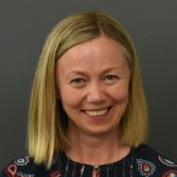
Dr Lorna Gold
Dr Lorna Gold is Director of Movement Building with FaithInvest. She lectures in the Department of Applied Social Studies in Maynooth University. Prior to her current roles, she led Trócaire’s Policy, Research and Advocacy for almost two decades, until April 2020. She holds a PhD in Economic Geography from the University of Glasgow. She is acting-chair of the board of the Global Catholic Climate Movement and is a member of the recently established Vatican Commission on the post-COVID world. Her most recent book Climate Generation – Awakening to our Children’s Future was described by Naomi Klein as “an anguished journey into the heart of the climate crisis.” It tells her personal story of waking up to the ecological emergency as a mother, academic and activist. Her academic research interests include just transition, civil society movements, and the role of faith groups in climate activism.
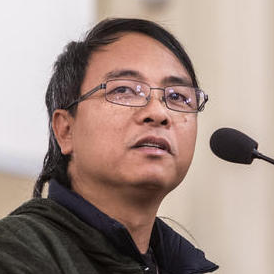
Yeb Saño
Yeb Sanio currently serves as Executive Director of Greenpeace Southeast Asia, leading the diverse operations of Greenpeace in the region. He leads the team that is responsible for confronting the biggest carbon polluters of the world in the landmark human rights case lodged against top oil and coal companies at the Commission on Human Rights. He was the Chief Negotiator of the Philippines in the U.N. Climate Convention while serving as Commissioner (Vice-Minister) of the Philippines’ Climate Change Commission from 2010-2015. As a climate negotiator, he was known as a champion for climate justice and was a strong voice for developing countries in the U.N. Yeb also founded the Climate Pilgrimage, a movement that aims to highlight communities confronting climate impacts but manifesting resilience and spiritual strength, and which involved a 1,500 kilometer walk from Rome to Paris in 2015. The shoes he wore during this journey were ‘retired’ beside Pope Francis’ shoes at the Place de la Republique. He likewise served as the Pilgrim Leader for the 1,500 kilometer walk from Rome to Katowice (Poland) in 2018. Yeb is married to an environmental and academic lawyer. They have two children.
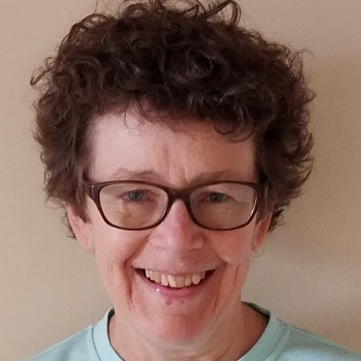
Marianne Comfort
Marianne Comfort is justice coordinator for Earth, anti-racism and women for the Sisters of Mercy of the Americas. In that role, she is a member of the Steering Committee of the U.S. based Catholic Climate Covenant and chairs the Inter-religious Working Group on Extractive Industries, based in Washington, D.C. She joined a Mercy delegation to the NGO spaces at the climate talks in Paris in December 2015. Marianne is a Mercy Associate, having made a covenant with the congregation in December 2019. She is a member of St. Camillus Parish in Silver Spring, MD, and active in the Archdiocese of Washington’s Care for Creation Committee. She is a graduate of St. Bonaventure University, a Franciscan institution in western New York State.
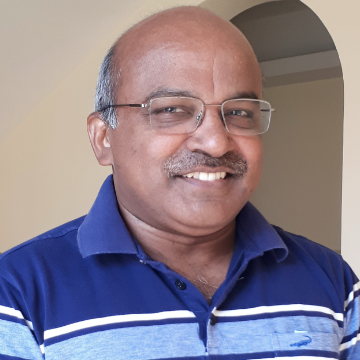
Fr. Xavier Jeyaraj, SJ
Fr. Xavier Jeyaraj, SJ is the Secretary of the Social Justice and Ecology Secretariat (SJES) of the Society of Jesus in Rome, Italy since June 2017. He has a Ph.D on Extractivism and Mining and its impact on indigenous people and environment. He has 30 years of field experience as a social worker and as a human rights lawyer and activist. Before assuming this new role as the Secretary of SJES, he was the Assistant Secretary of SJES for 3 years (2012-2014); Coordinator of Social Apostolate of Society of Jesus in South Asia for 5 years (2007-2011); and the Founder-Director of Udayani Social Action Forum for 9 years (1997-2006) in Kolkata. He worked among the most deprived santhal tribals and Dalits in the slums and villages around Kolkata, empowering them through conscientization and mobilization. He also coordinated a networking forum called “South Asian Peoples’ Initiatives” (SAPI) which is now rechristened as “Lok Manch” (People’s Platform), a networking forum of around 100 NGOs and CBOs in India.
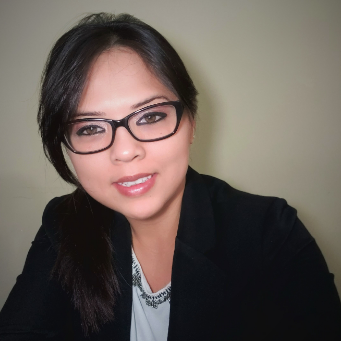
Analisa Ramsahai
Analisa Ramsahai resides in Trinidad and Tobago, a country located in the Caribbean region. She holds a BSc. Environmental Natural Resource Management and Biology (Honors) from the University of the West Indies. She is a certified Laudato Si’ Animator and is an active member of the Laudato Si’ Generation Working Group since its inception in 2019. Ms. Ramsahai has also served in the GCCM Steering Committee and then the Global Membership Council from 2019-2023. Ms. Ramsahai worked as the Regional Programme Coordinator for the Franciscan Institute for Personal and Family Development, a ministry of the Sisters of the Sorrowful Mother (SSM) from 2019-2023. At the Franciscan Institute for Personal and Family Development. In addition, Ms. Ramsahai serves as a Board of Director for the Franciscan Institute. The institute is located on the beautiful and serene Caribbean islands of St. Lucia and programmes offered in Grenada and Trinidad. The institute’s mission is dedicated to promoting a culture of peace where right relationships and community are nurtured in the Franciscan tradition of compassion, moderation, simplicity and reverence for all creation. In her spare time, she enjoys photography, graphic design, videography and distance running.

Br. Michael Perry, OFM
Br. Michael Perry, OFM was born in Indianapolis, Indiana, USA in 1954. Michael began his university studies in pre-law at Indiana University. In 1977, Michael joined the Franciscans. He served as a missionary and instructor in the Democratic Republic of Congo from 1981-82 and 1985-1990. Following theology studies at Catholic Theological Union in Chicago, Michael went to the University of Birmingham, UK where he completed Ph.D. studies in religious anthropology. From 2000-2005, Michael served as foreign policy advisor to the US Conference of Catholic Bishops in Washington, DC, USA. From 2005-2007, he served as Africa advisor at Franciscans International, and from 2007-2008 at Catholic Relief Services. He was elected provincial of his Franciscan province in St. Louis, Missouri, USA in 2008. The following year, he was elected Vicar General of the Franciscan worldwide Order and was transferred to Rome. From 2013-2021, Michael served as Minister General and Servant of the worldwide Franciscans. In January 2023, he was named Director of the Laudato Si' Center for Integral Ecology at Siena College, Albany, New York, USA, a position he currently holds. Michael also serves as the president of the International Board of Directors of Franciscans International.
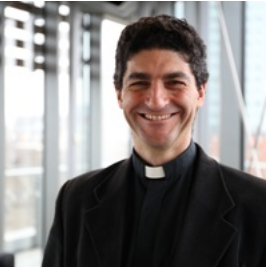
Rev. Dr. Augusto Zampini-Davies
Rev. Dr. Augusto Zampini-Davies is a lawyer (Universidad Católica Argentina, 1993) and theologian (Universidad del Salvador, Argentina, 2006), has a master’s degree in international development (University of Bath, UK, 2009-10), a PhD in theology and economics (University of Roehampton, 2010-2014), and a post-doc from Margaret Beaufort Institute of Cambridge University. He was a theological advisor to CAFOD (Catholic Agency for Overseas Development, UK, 2014-2017), and served as an official and Adjunct Secretary at the Vatican Dicastery for Integral Human Development and of the Vatican Covid-19 Commission (2017-2021). Among other commitments, Augusto has been appointed as one of the experts for the Amazon Synod (2019), has participated at the World Economic Forum in Davos for four years (2018-21), and in several UN COPs for Climate Change, UN sustainable development and artificial intelligence meetings, and OECD, UNESCO and EU meetings on ecology.
Trained in moral theology, with a focus on economics and environmental ethics, Augusto brings a moral lens to issues of human rights, human development, and ecological crisis, among others. He is also experienced in practicing law on an international scale, having worked as a lawyer at the Central Bank of Argentina and at the international law firm Baker & McKenzie before entering the seminary. As a Catholic priest, he has also served and lived among poor communities in Argentina.
Augusto is an Honorary Fellow and has been lecturing on theology, Christian ethics, and human rights since 2004 at various universities in Argentina and the UK. He has received several awards and scholarships, such as the British Council Chevening Scholarship (2009-10), and has been part of different international leadership programmes, including the US Secretary of State International Visiting Leadership Program (IVLP) in 2019, and the Georgetown University Leadership Programme in 2018. He is a Board Member of the European Climate Foundation and of Laudato Si’ Movement.
He is currently serving as a pastor and professor in his diocese of San Isidro, in Buenos Aires, Argentina.
Board of Directors
Unchanged:
LSM’s Board of Directors provides direction to the Secretariat, together with the Steering Committee, to ensure mission and vision fulfillment. The Board supports the Secretariat to advance key strategic projects through high-level Church networking as well as provides financial oversight for LSM.
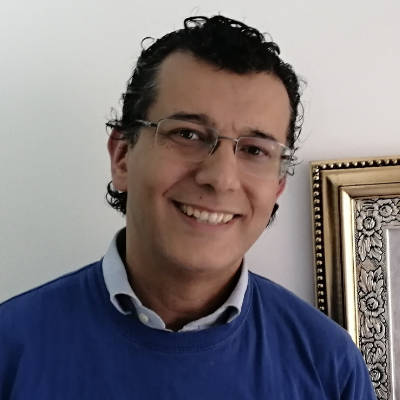
Alirio Cáceres Aguirre
Advocacy Campaigner, Spanish America
Bogotá, Colombia "Permanent Deacon (2002), Colombian, married to Andrea for 27 years. Their children, Daniel Esteban (25), David Felipe (20), and Laura María (15) are ""smiles from God."" He is a Chemical Engineer, Educator, and Master in Theology, dedicated to Ecotheology, Ecological Pastoral, and Territorial and Institutional Environmental Management. He encountered the Movement in 2015 and has collaborated in the Steering Committee and later in the World Council of Members between 2019 and 2023. He is involved as a volunteer in various integral ecology teams (Caritas, CLAR, Church and Mining Network, GreenFaith, Amerindia, among others). He promotes the care of creation with his characters ""Oikos: the ecological mime"" and ""Rio the Clown"".

Alirio Cáceres Aguirre
Advocacy Campaigner, Spanish America
Bogotá, Colombia "Permanent Deacon (2002), Colombian, married to Andrea for 27 years. Their children, Daniel Esteban (25), David Felipe (20), and Laura María (15) are ""smiles from God."" He is a Chemical Engineer, Educator, and Master in Theology, dedicated to Ecotheology, Ecological Pastoral, and Territorial and Institutional Environmental Management. He encountered the Movement in 2015 and has collaborated in the Steering Committee and later in the World Council of Members between 2019 and 2023. He is involved as a volunteer in various integral ecology teams (Caritas, CLAR, Church and Mining Network, GreenFaith, Amerindia, among others). He promotes the care of creation with his characters ""Oikos: the ecological mime"" and ""Rio the Clown"".
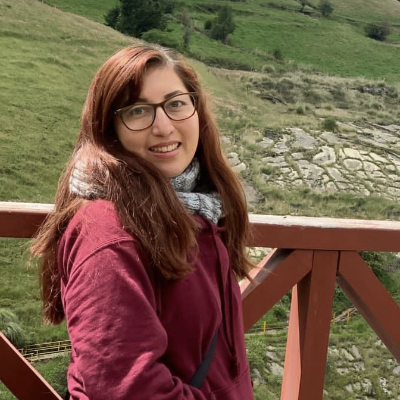
Alexandra Aguirre
Operations Program Manager
Alexandra has a multilingual Bachelor in International Business and International Relations from the Pontifical Catholic University of Ecuador, a Diploma in Integral Ecology from the Catholic University of Santa Fe and an Erasmus Mundus Master in Latin America and Europe in a Global World focused on International Cooperation from the Universities of Salamanca, Stockholm and Sorbonne Nouvelle Paris 3. She is interested in debates around development, postdevelopment, decolonisation, feminism and degrowth. She speaks Spanish, English, French, Portuguese and Italian.
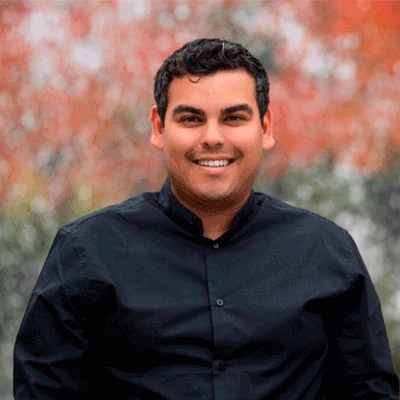
Alonso de Llanes
Special Projects, Program Manager
Monterrey, Mexico
Alonso has been committed to the environment and natural resources from different platforms, including NGOs, consultancy firms, international companies and even the Mexican Congress. He understands the relationship between God and nature and collaborates both in Mexico and France with eco-parish programs. He is a lawyer with a master's degree in energy law from the Universidad Autonoma de Nuevo Leon and a master's degree in energy law and management and sustainable development from the University of Strasbourg in France. He speaks English, French, and Spanish fluently.

Andrea Castillo
Community Manager and Content Creator
Andrea is from Guatemala and has a degree in Journalism from Universidad del Istmo (UNIS). She also has a Master's degree in Digital Marketing and Digital Advertising from the European School of Management and Business (EUDE). Andrea speaks Spanish, English and Italian.
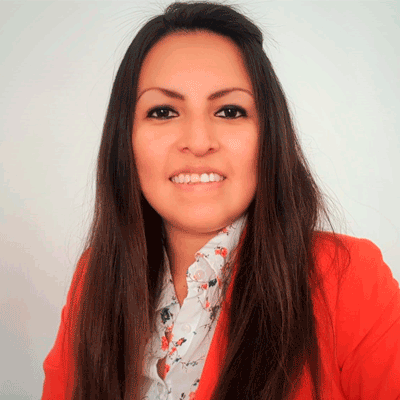
Angela Alejo
People Operations Manager
Valencia, Spain
Angela holds a bachelor’s degree in Psychology from the University of Lima (Peru) and a Master’s in Human Resources Management from the University of Valencia (Spain). She has more than 10 years of experience in Human Resources, working for different types of organizations and leading recruitment, onboarding, performance management, and work climate processes. Her specialization in Coaching and Humanistic-Existential Psychotherapy gives her a person-centered approach, which guides her actions in people management.

Ana Belén Ortega Mora
Spanish Language Chapters and Circles Coordinator
Quito, Ecuador
Environmental Engineer (UISEK) and Specialist in Leadership, Climate Change and Cities (FLACSO Ecuador). She belongs to regional networks: ActionLac, Clima Líderes and Movimiento de Jóvenes Latinoamericanos y Caribeños frente al Cambio Climático ¡CLIC! Ten years of experience in activism and climate action from youth, with participation in UN climate negotiations. LS animator since 2017 and co-founder of the LSM Ecuador Chapter. Personal motto: "War with plastic and peace with trees.
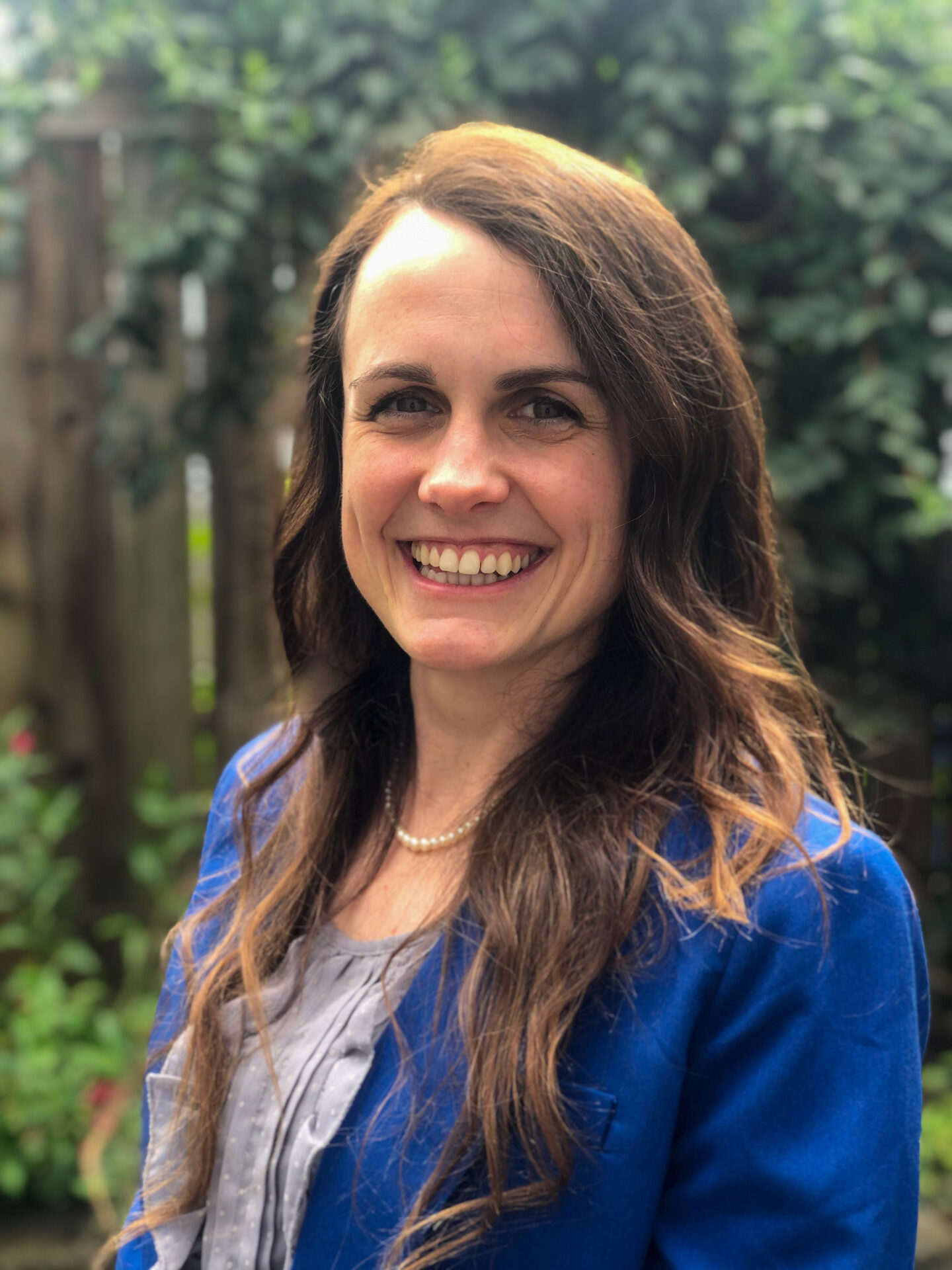
Anna Johnson
North America Senior Programs Manager
Seattle, Washington, USA
Anna Johnson works with passionate and talented Catholics across North America for personal and systemic ecological transformation. Prior to joining LSM, she worked for over a decade in Catholic Social Teaching and global solidarity curriculum design and leadership training, particularly with youth and young adults. Anna has a BA in Peace Studies and Political Science from the University of Notre Dame, and an Executive Masters in Sustainability Leadership from Arizona State University, and on any given weekend you can find her outside in the mountains.
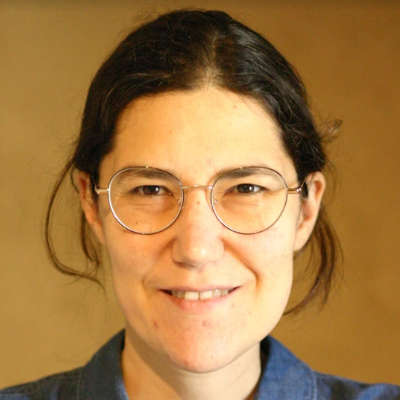
Anne Doutriaux
France Programs Coordinator
Châteaudouble, France
Anne is an engineer from the Ecole Centrale Paris. After 10 years of working near Paris, she now lives in a rural village. She has worked for the catechesis of children and volunteers in associative actions about reading.
She likes to create links and to build projects with different people.
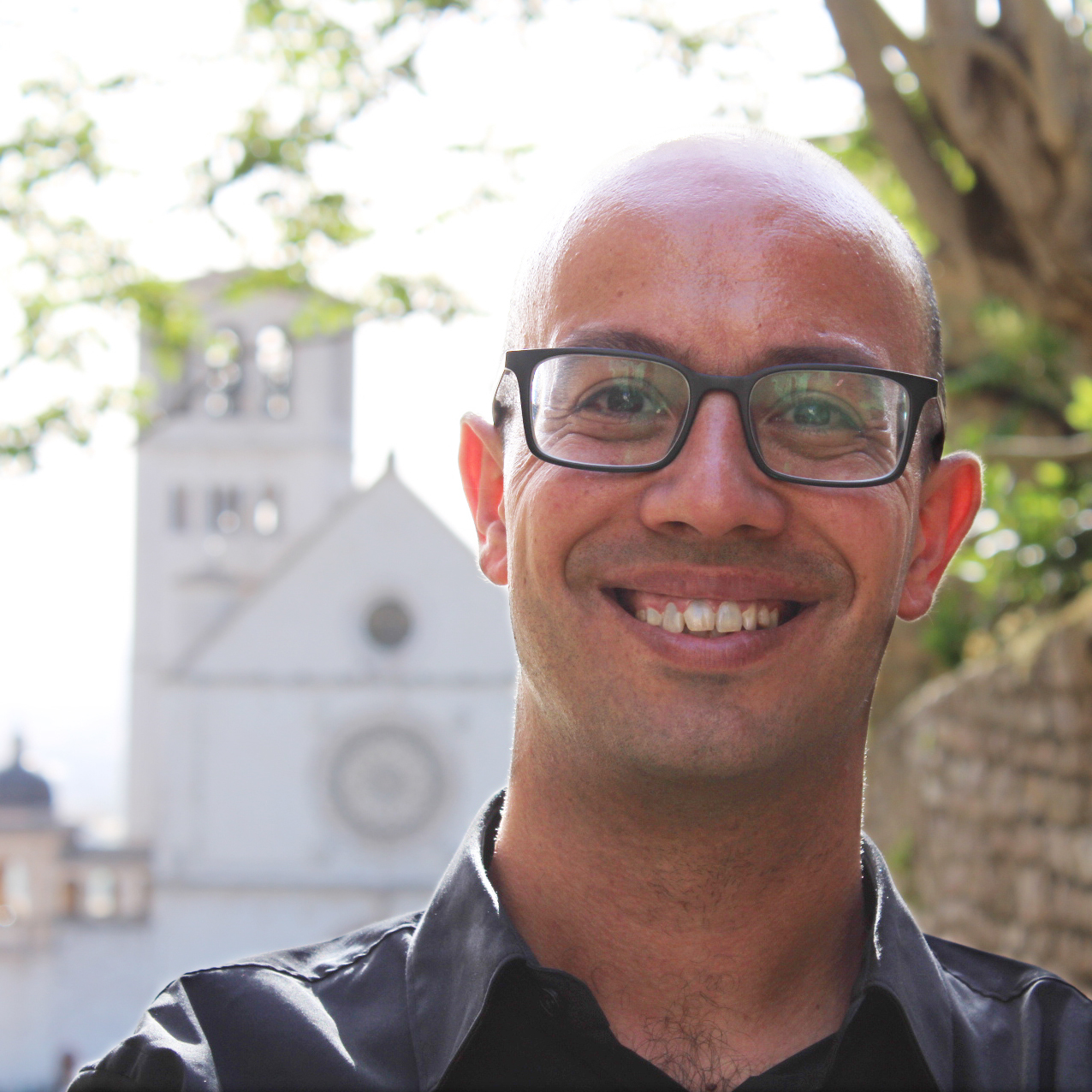
Antonio Caschetto
Project Manager, Laudato Si' Center
Assisi, Italy Antonio lives and works in Assisi, where he leads the Laudato Si' Center (AssisiLaudatoSi.org/en) together with the Diocese, Franciscan Families, Laudato Si' Citadel and FAI. He is also Global Advisor of the Laudato Si' Circles Program, and supports the in-person training of Animators in Italy from Assisi. He has coordinated the Italy programs for several years, including online training of Laudato Si' Animators and promoting Laudato Si' Circles. He is also a member of the international eco-spirituality team with whom he edits a reflection column on the Sunday Gospel for the Laudato Si' Movement blog. He is an architect and has designed and constructed energy-efficient buildings. He is the author of the book "Vivi Laudato Si'", by Edizioni Francescane Italiane. Married to his beautiful wife, Angelica, he has two beautiful sons, Francesco and Emanuele, and a friendly dog named Jumpy.

Antonio A. Garrido Salcedo
Interim Assistant Manager for Hispanoamerican Programs
Córdoba, Spain
He studied a double degree in Political Sciences and Law in Granada. With a Master in International Cooperation. His professional career started in Malta and Rome, where he worked in the TV News Agency Rome Reports, the Pontifical University of the Holy Cross and the Dicastery for Laity, Family and Life in preparation of WYD 2019 in Panama. He also collaborates as an advisor in public relations and communication with different institutions and media.
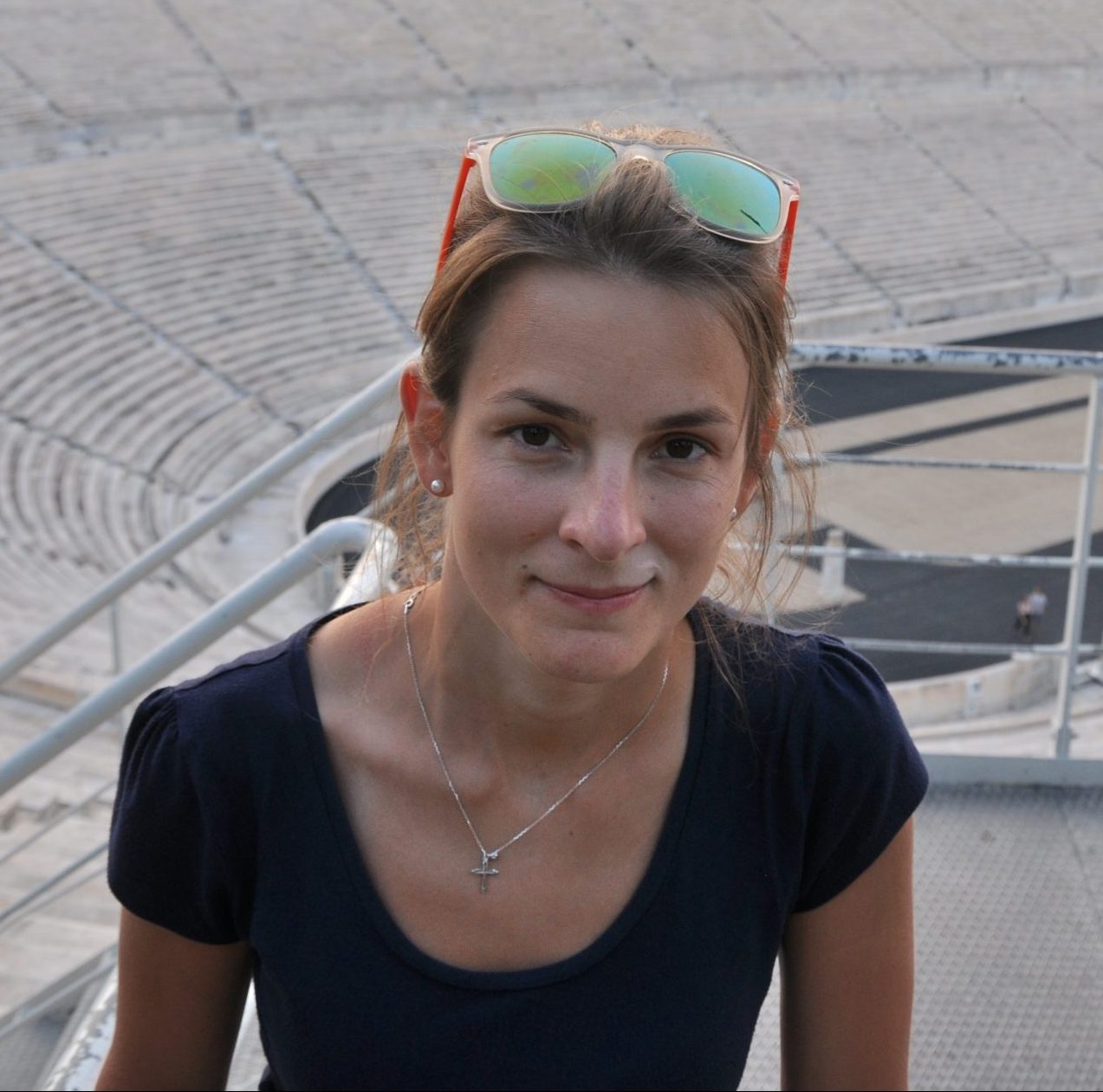
Anna Kluzińska
Finance and Operations Manager at LSM Poland - Światowy Ruch Katolików na rzecz Środowiska
Warsaw, Poland
Anna brings together humanistic background with experience in the field of finances and organisational skills. As an outdoor sports passionate she loves the nature and wants to protect it in the spirit of Laudato si'
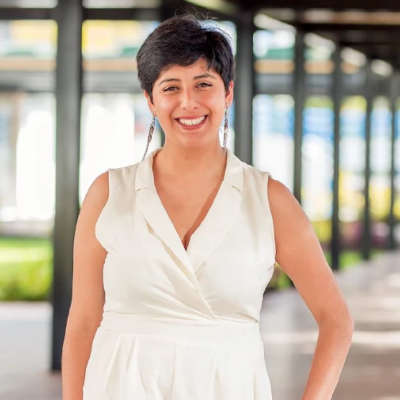
Ana Paula Peña
Movement Building Project Manager
Quito, Ecuador
Ana Paula serves as the Movement Building Project Manager. She has a Multilingual Bachelor’s degree in International Business and International Relations from the Pontifical Catholic University of Ecuador. Ana Paula believes in working alongside communities and individuals in order to make a change. She has a passion for the scenic arts, a field she believes has a social commitment and can work as a tool for change.
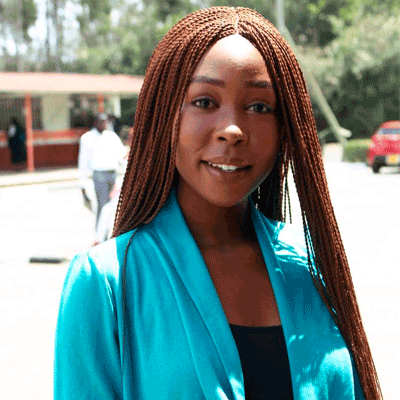
Ashley Kitisya
Fossil Free Campaigner, Africa
Nairobi, Kenya
Ashley is a young lawyer from Nairobi, Kenya. She is a committed environmental activist, with experience working with different kinds of organisations. She is working in divestment, climate strikes and net zero emission campaigns. She dreams on a world that runs free of fossil fuel energy.
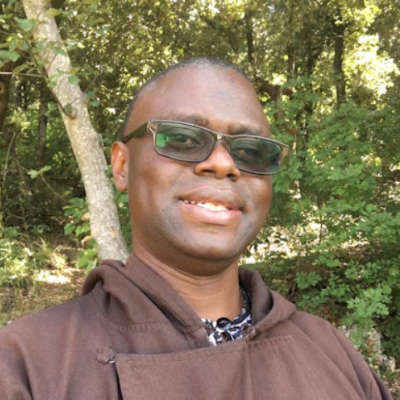
Benedict Ayodi
Programs Coordinator
Nairobi, Kenya
A Franciscan friar, previously served as the director of Justice, Peace, and Integrity of Creation (JPIC) OFM Capuchins in Rome. Worked as director of Damietta peace Initiative (DPI) promoting inter-faith dialogue, peace, and non-violence. He graduated MA in International Affairs and currently a PhD student in OD. currently residing in New York and partly supporting the advocacy work of Franciscans international at the UN.
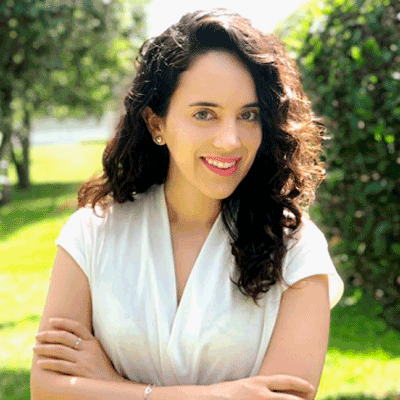
Carla Bastidas Jurado
Special Projects Program Assisstant
Quito, Ecuador
Carla has a bachelor’s degree in Biotechnology Engineering from the University of the Armed Forces-ESPE and a master’s degree in Environmental Engineering from the Technical University of Hamburg. She has experience in environmental management and consultancy, sustainability, circular economy, and carbon footprint. Carla speaks Spanish, English, Portuguese, and German.
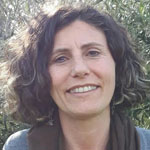
Cecilia Dall'Oglio
Associate Director of European Programs
Rome, Italy
Cecilia Dall'Oglio is the Associate Director of European Programs of the Laudato Si' Movement, with which she started to collaborate in 2017 as world manager of the Divest campaign. She has a degree in political science and worked for over twenty years at FOCSIV, an Italian member of CIDSE, where she was responsible for campaigns on social justice and fight against poverty, in collaboration with the offices of the Italian Bishops’ Conference and Catholic organizations. She is a member of the Scientific Committee of the Joint Diploma in Integral Ecology promoted by the Pontifical Universities in Rome and coordinates its laboratories. Since 2001 she has been collaborating with the National Office for Social Problems and the Work of the Italian Bishops’ Conference in the context of the Italian and European commitment to justice and peace and is a member of the group of experts on care of Creation. He is a member of the Ecumenical Steering Committee of the Season of Creation.
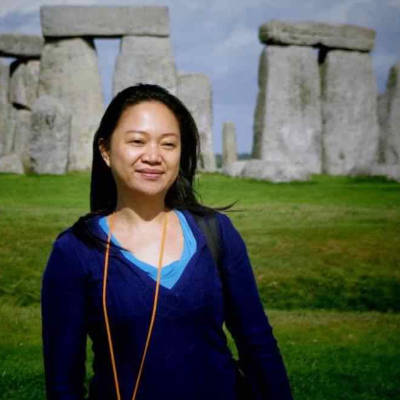
Cheryl Dugan
Program Manager-Asia Pacific and English Speaking Animators
Manila, Philippines
Cheryl’s journey is fueled by her passion for empowering people. She previously worked with international non-government organizations advancing the rights of children across Asia. Today, she leads the campaigns, programs and partnership building activities of LSM in Asia and Oceania as well as the leadership programs for grassroots leaders in English-speaking continents.
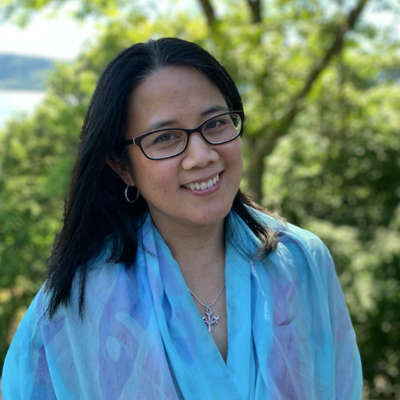
Christina Leaño
Associate Director
New York, United States
Christina provides spiritual and organizational leadership to LSM, including directing the movement’s eco-conversion programs. She is passionate about exploring the intersection of spirituality and social justice and supporting people’s spiritual transformation through contemplative practices and engagement in social and ecological justice. She has degrees from Yale University and the Graduate Theological Union in Berkeley. In her free time she loves dancing with her daughter Malaya and forest bathing with her dog.
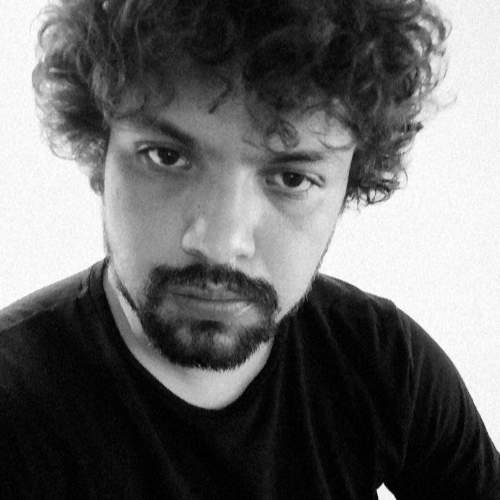
Daniel Alarcón
Web Development and Design
Yucatan, Mexico
Daniel has 10+ years of experience in web development and design. His work has largely focused on nonprofit organizations. He also volunteered for 10 years teaching technology and mathematics to children. He enjoys nature, drawing, and programming. He currently resides in Mérida, Yucatán, México.

Doménica Reyes
Communications Project Manager
Latacunga, Ecuador
Doménica serves as Communications Project Manager. Doménica has a bachelor’s degree in Multilingual International Business and International Relations from the Pontifical Catholic University of Ecuador and a Master's Degree on Digital Marketing . She speaks Spanish, English, French and Italian. She has worked with LSM since 2016.
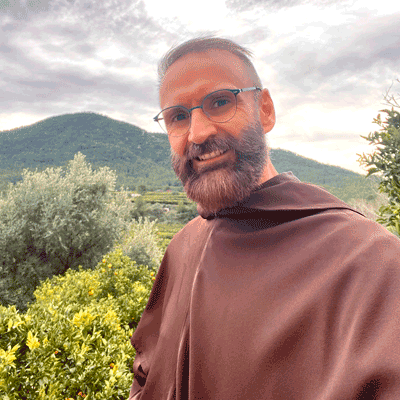
Eduardo Agosta Scarel
Senior Advisor
Spain, Latin America
Eduardo is a friar of the Carmelite Province of Aragon, Castile and Valencia, Spain. He lives in Onda, diocese of Segorbe-Castellón, where he collaborates with educational, social and pastoral activities. He is a Doctor of the University of Buenos Aires in Atmoshperic and Oceanic Sciences; a volunteer member of the coordinating team of the Carmelite NGO, of the International Commission for Justice, Peace and Integrity of Creation of the Carmelite Order; he collaborates with the Dicastery for the Promotion of Integral Human Development and the Argentinean Episcopal Conference, has advised on environmental issues to the Latin American Episcopal Council (CELAM) for several years. Eduardo has extensive experience in climate variability and climate change; he is the author of numerous scientific articles in the field of climate science and in the area of integral ecology; he is a university professor and researcher.
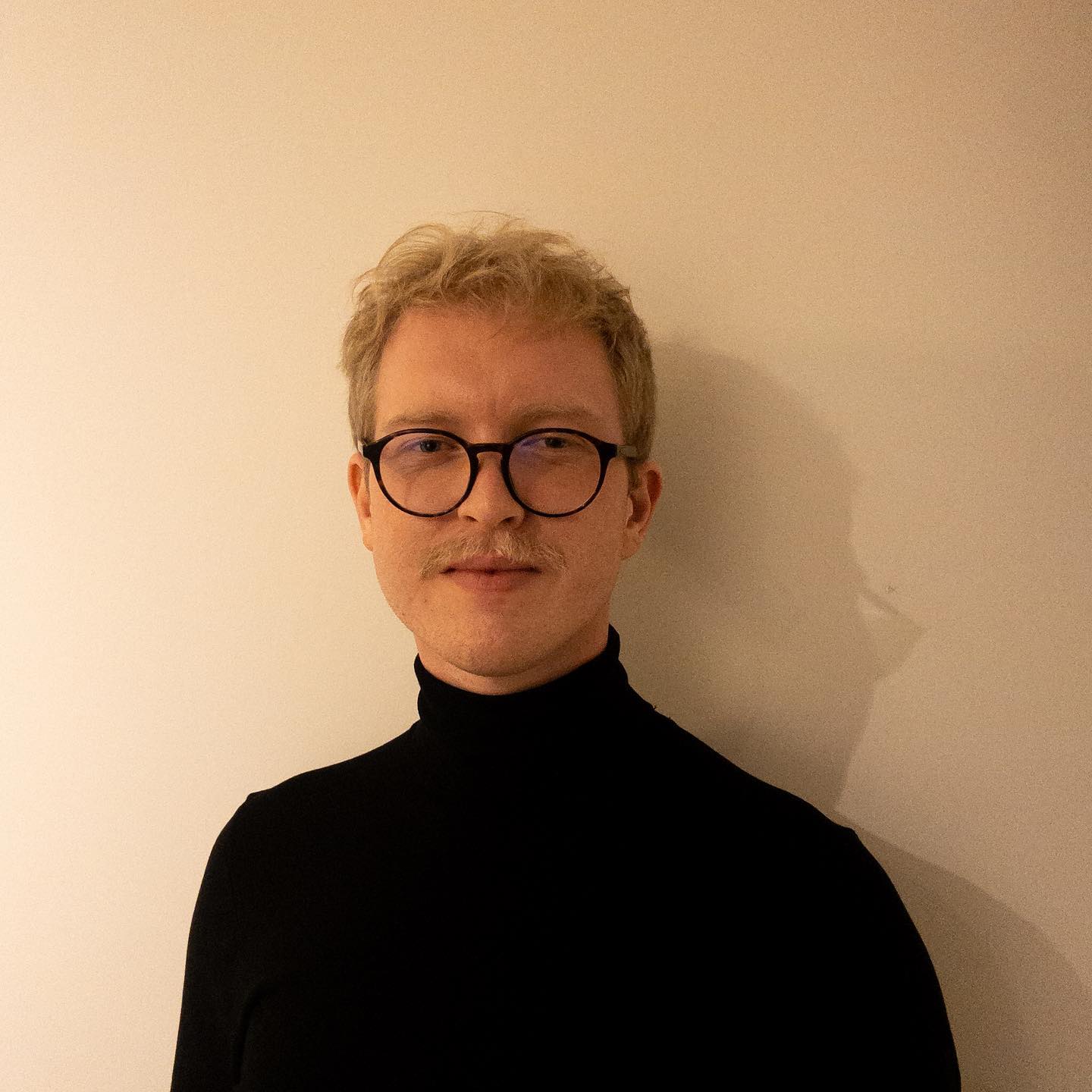
Eduardo Nischespois Scorsatto
Brazilian Outreach Coordinator
Porto Alegre, Brazil
Eduardo is an architect and urban planner, Brazilian and a young member of the Youth Pastoral. He is a specialist in Collaborative Territories by the University Institute of Lisbon (ISCTE), in Spirituality by the Faculty of Theology and Human Sciences (ITEPA Faculdades) and Master in Urban and Regional Planning by the Federal University of Rio Grande do Sul (UFRGS). Currently he contributes in the service of the National Coordination of Youth Pastoral (CNPJ) and the Regional Coordination of Youth Pastoral (CRPJ). At the university he developed research on territory, actors and political-territorial uses urban occupations and housing. In the Laudato Si' Movement he works as Brazil Catholic Outreach Coordinator, especially in the diffusion of the documentary ""The Letter"".
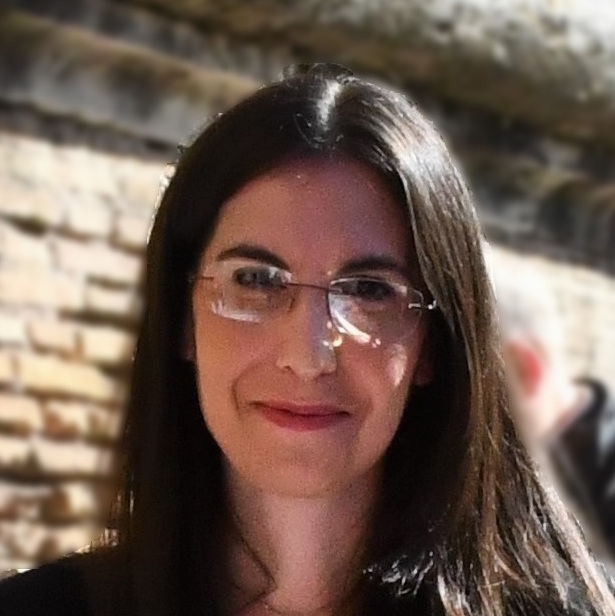
Elena Attanasi
Programs Coordinator for Europe
Tuscany, Italy
Elena is Programs Coordinator for Europe and has been collaborating with the LSM since 2019. In 2018, for the LSM, she supported the organization of the first ecumenical prayer for creation in Assisi. She has a Bachelors’ degree and a master’s degree in the field of communication sciences. Elena is Italian and was born and grown up in Tuscany, where she still lives.

Eloi Descamps
Campaign and advocacy coordinator for France and Europe
Paris Eloi holds a master's degree in public policy from Sciences Po Paris and studied ecological theology at the Centre Sèvres. He was a long-time member of the Scouts Unitaires de France (SUF), and co-founded the Lutte & Contemplation collective. He is committed to ecological and social justice.

Erin Lothes
Senior Manager, Laudato Si Animators Program
New York
Erin is an ecological theologian who holds a BA. in English from Princeton University, an MA in Theology from Boston College, and a Ph.D. in Theology from Fordham University. She is on the faculty of St. Elizabeth University and served as an Earth Institute Fellow at Columbia University. Erin is the author of two books, Inspiring Sustainability: Planting Seeds for Action and The Paradox of Christian Sacrifice: The Loss of Self, the Gift of Self, as well as articles on energy ethics and faith-based environmentalism. A long time activist within the Catholic and interfaith environmental and divestment movement, she lives in New York with her husband and two sons.
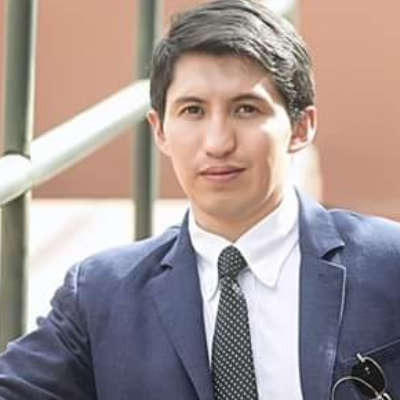
Fabián Campos
Co-Director of Movement Development
Quito
Fabián Campos studied at the Pontifical Catholic University of Ecuador: a Multilingual Bachelor's Degree in Business and International Relations and a Master's in International Business. He studied the Ignatian Latin American University Leadership Program at AUSJAL in Quito and the Ibero-American Leadership Program at the Pablo VI Foundation in Madrid. He has a Diploma in Integral Ecology from the RUC. He is currently pursuing a Masters in Human Development at the Universidad Iberoamericana in Mexico City and is part of the KAICIID Fellows Program for Interreligious and Intercultural Dialogue. He serves as the Programms Manager of Hispanic America for the Laudato Si' Movement and is a Founding Member of the Ibero-American Leadership Network in which he is part of the Administration and Finance Team.

Henry Virgil
Director of Finance
"Enrique, ""Henry"", joins LSM as the Director of Finance having worked at various nonprofit organizations providing financial leadership. He most recently served as VP of Finance and Administration at The F.B. Heron Foundation where he managed a $400M endowment and Chief Financial Officer of Mosholu-Montefiore Community Center, a large community based nonprofit in the Bronx where he managed multiple contracts funding sources like NYC, NYS, and Federal governments, including regulatory audit and compliance demands. Henry was the youngest Chief Financial Officer in the agency's networks and led multiple panels on implementing and streamlining systems and obtaining higher negotiated federal indirect rates. He also worked for the Archdiocese of New York's Global Regional School System where he oversaw the finances of all of the regional schools in the borough of the Bronx.
Henry currently serves on the board of Altagracia Faith & Justice, works as the Treasurer and holds a Bachelor of Science in Accounting."
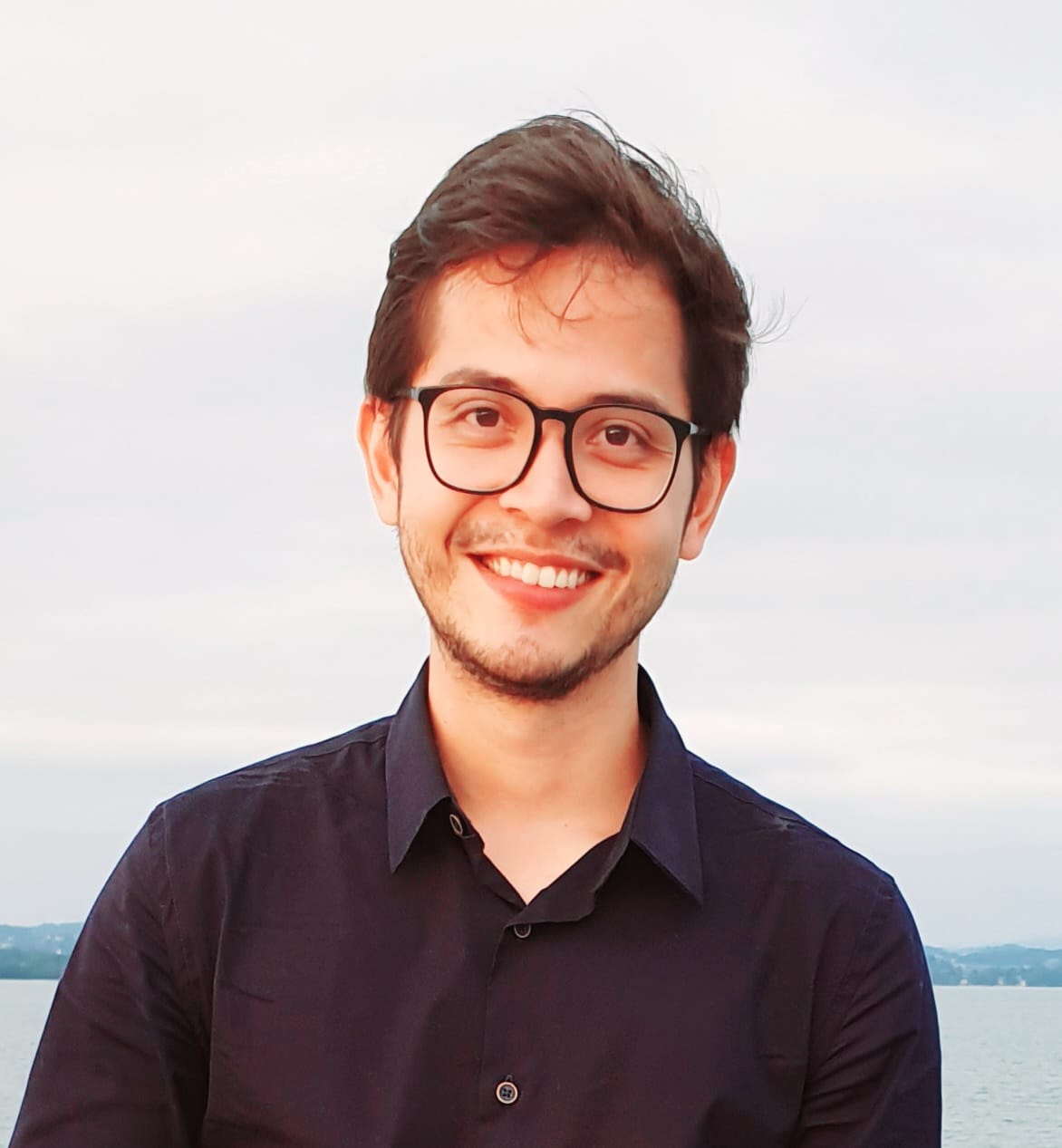
Igor Bastos
Senior Manager for Iberoamerica
Uberlândia, Brazil
Igor Bastos served as a National Secretary of Justice, Peace, and Integrity of Creation (JPIC) of the Youth Franciscans of Brazil and as a member of the board of SINFRAJUPE (Inter-Franciscan Service of Justice, Peace, and Ecology). Since 2009, he is supporting the homeless and landless struggles through the Franciscan Action of Ecology and Solidarity (AFES). He graduated in Civil Engineering at the Federal University of Uberlândia. He currently lives in Uberlândia, Brazil, where he works from the AFES office.
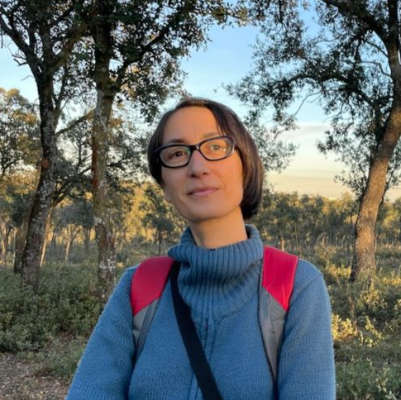
Irene del Pozo Gómez
EU In-Country Programs Coordinator
Madrid (Spain) Social pedagogue (UCM, 2009), environmental educator and nature guide, with extensive experience in group dynamization to promote participation and shared decision-making, in event organization and project coordination with municipalities and other public and private entities.
A volunteer with Caritas and several environmental associations, she has collaborated in social and environmental projects, and has been involved in the planning and dynamization of sustainable, formative and participative citizen proposals.
She has been a Laudato Si' animator since 2021. She is an avid gardener, with a great passion for the care of our Common Home.
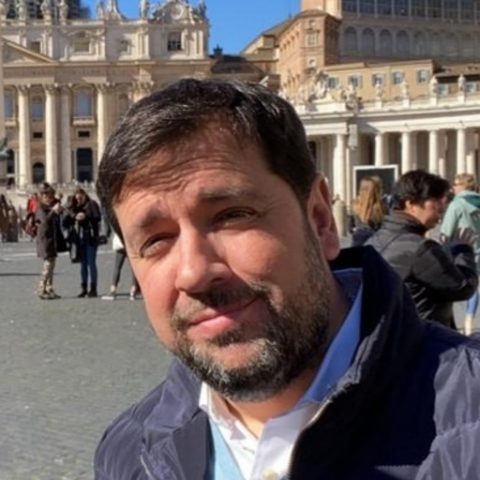
Gabriel López Santamaría
Communications Manager
Madrid, Spain
Born in Buenos Aires, Argentina, he has lived in Spain for more than 20 years. He has studied Theology, Philosophy and Sociology. He is founder of Católicos en Red (communication agency) and has collaborated with the Laudato Si Movement since its beginnings in 2015. A specialist in marketing and religious communication, Gabriel is a family man ( with two children) and a lover of the charism of St. Francis of Assisi.
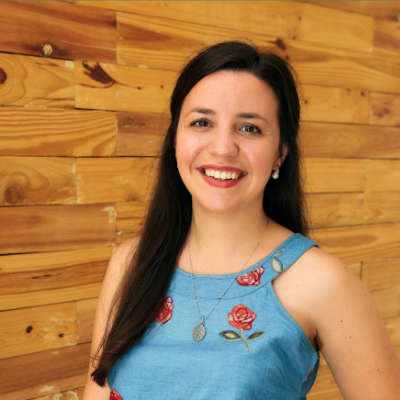
Guadalupe García Corigliano
Content Creator
Buenos Aires, Argentina
Guadalupe has a degree in Journalism (USAL), with postgraduate studies in Digital Journalism (UPF) and Church Communication (UCCuyo). She is a writer and content creator for LSM. Committed to the causes of social action and the Catholic Church.
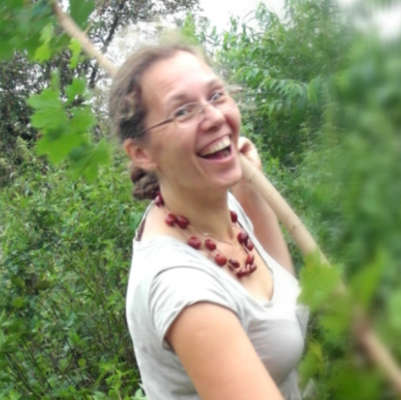
Joanna Zatylna
Energy Solidarity Project Coordinator
Łódź, Polska Psychologist, co-founder of the Polish Natural Building Association; until 2012, a long-time member of the ecumenical community of Chemin Neuf with experience of evangelization in France and Poland (responsible for the mission of young people aged 14-18 in Poland), She works at a St. Albert shelter for homeless women in Lodz. Involved in many NGO initiatives in the area of social exclusion and homelessness, as well as in the area of care for creation. Happy wife and mother of 5 wonderful children. In the Polish team of the Laudato Si' Movement, she is co-responsible for the energy solidarity project - "Warm Home - Warm Church".
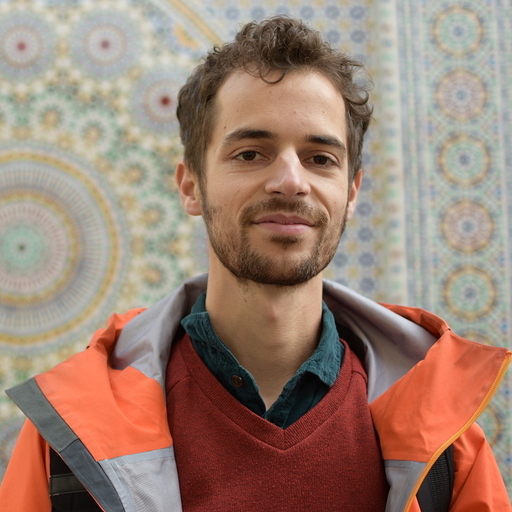
Joseph D'halluin
Divestment campaigner
London
Joseph is an experienced campaigner from France, where he worked for different non-profit and public organizations, dealing with a wide range of topics like sustainable agriculture, cycling, air transportation or care policies. He holds a Master's degree in political sciences and green political theory. He has a strong interest in empowering communities in advocacy issues and inventing new tools to tackle the climate crisis. He now lives in London.

Karla Corsino Zavaleta
Special Projects Assistant
Oaxaca, Mexico
Karla has a B.S. in Engineering in Biotechnology from the Universidad Veracruzana with a specialization in Environmental Ecology. She has experience in initiatives and organizations that promote and implement sustainability, integral ecology, social responsibility and ecological spirituality projects, through participation in community projects from the laboratory area to project management. She speaks Spanish and English.
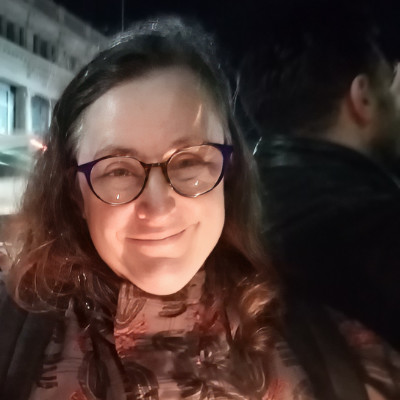
Laura Madrigal-Estebas
Irish campaigner
Laura has a BSc in Biology, PhD in Immunology, and a Master's degree in Development Studies. Mother of three, Spanish in origin, she's lived in Ireland for over thirty years. Previously working as a scientist and volunteering in her parish, she's working for LSM and Trócaire (Irish Caritas sister) since November 2023.
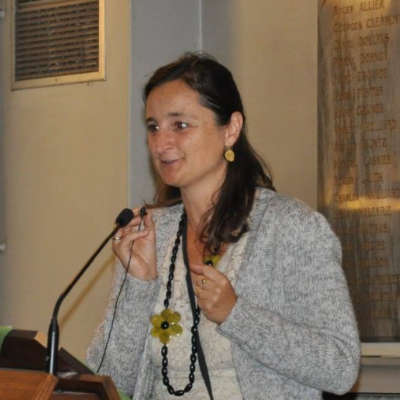
Laura Morosini
Director of programs Europe
Paris
"After a double degree in Political Science
and Environnemtal Law, Laura, worked on corporate
accountability for the French Parliament,
then as the advisor to the Deputy Mayor of Paris,
leading the first Paris climate plan.
Conscious of the importance of grassroot mobilization
she founded United Christian for the Earth (Chrétiens unis pour la terre),
then the oecumenical label Eglise verte for parishes,
before serving LSM as a director of French programs. "

Lauren Dixon
Development Coordinator
Little Rock, Arkansas, USA
Lauren joined LSM in 2023. She is committed to generating systemic ecological change for conservation and sustainability efforts. She has a Bachelor of Science in Environmental Science with a concentration in Conservation and a Master of Science in Business Analytics. Her expertise lies in a broad range of topics, including climate change, green infrastructure, sustainable agriculture, and renewable energy. Lauren's commitment to the mission and values of the Laudato Si' Movement align with her drive to make a difference in the world.

Leticia Araujo
Program Assistant | Portuguese Speak Countries
Piauí, Brazil
Letícia Araújo has a degree in Journalism from the Estácio de Teresina college, and is a studying Publicity, Advertising and Digital Marketing. Altogether, she has more than 10 years of work with creative, digital and community communication in front of religious and civil society organizations, especially in the fields of human rights, justice, ecology and the promotion of citizenship. For 08 years she served as Communications Secretary for the Franciscan Youth of Brazil at the local, regional and national levels. She is currently Communicator and Secretary of the Franciscan Family Conference in her state. Third Franciscan of YOUFRA Brazil, currently residing in Teresina, Piauí, Brazil.
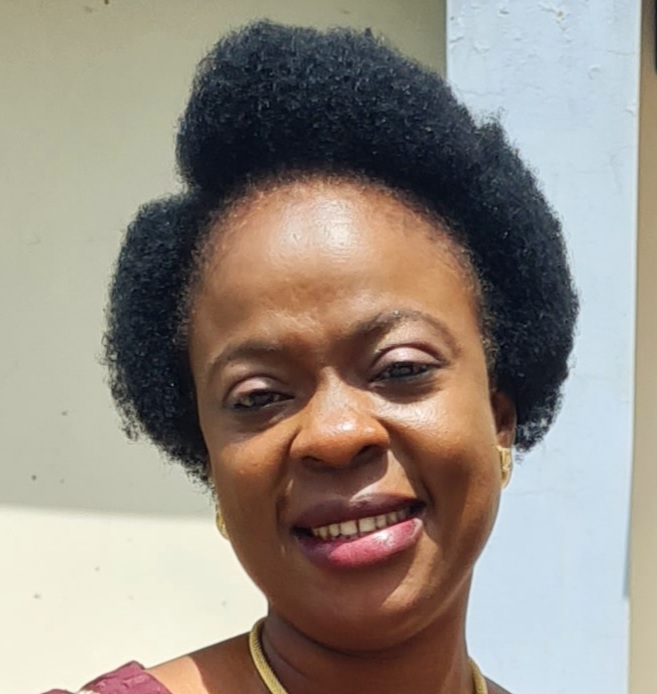
Lindlyn Moma
Director of Advocacy
South Africa
Lindlyn Moma combines her human rights law background with her passion for tackling the climate crisis and promoting ecological justice. In joining the Laudato Si Movement, she combines her spirituality with her vocation. Lindlyn has over 20 years of strategic leadership within the environmental justice sector, most recently serving as Africa Program Director of Greenpeace Africa and WildAid. She is a trained developmental industry executive leader from the Syracuse University, Maxwell School of Leadership Program and the Robert Gass Transformational Leadership Program. Lindlyn Moma is a member of the Board of Advisors at the International Institute for Democracy and Electoral Assistance (International IDEA) based in Sweden and is keen on advancing democracy amidst the climate crisis. Her voluntary work also extends to serving as a Council of Seven members at Good for Trust South Africa.
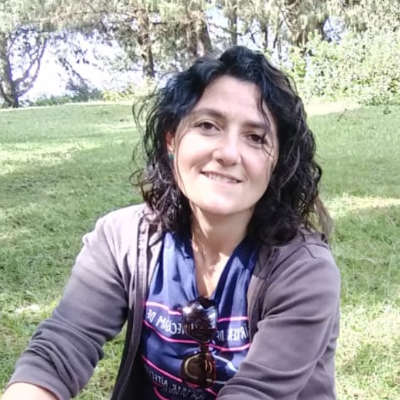
Lucia Sorrentino
Member Organizations Coordinator
Naples, Italy
Lucia is the LSM Member Organizations Coordinator and is based in Naples, Southern Italy. She holds a PhD in History and International Relations of Africa and spent more than 15 years in the African Continent serving as humanitarian and development worker. She believes that social justice and environmental justice are closely connected and issues that impact the environment cause significant impact especially on the poor. She is proud of being part of a global movement that raises awareness and lead in action worldwide. The more the better! She loves swimming and is very concerned about the defence of biodiversity.
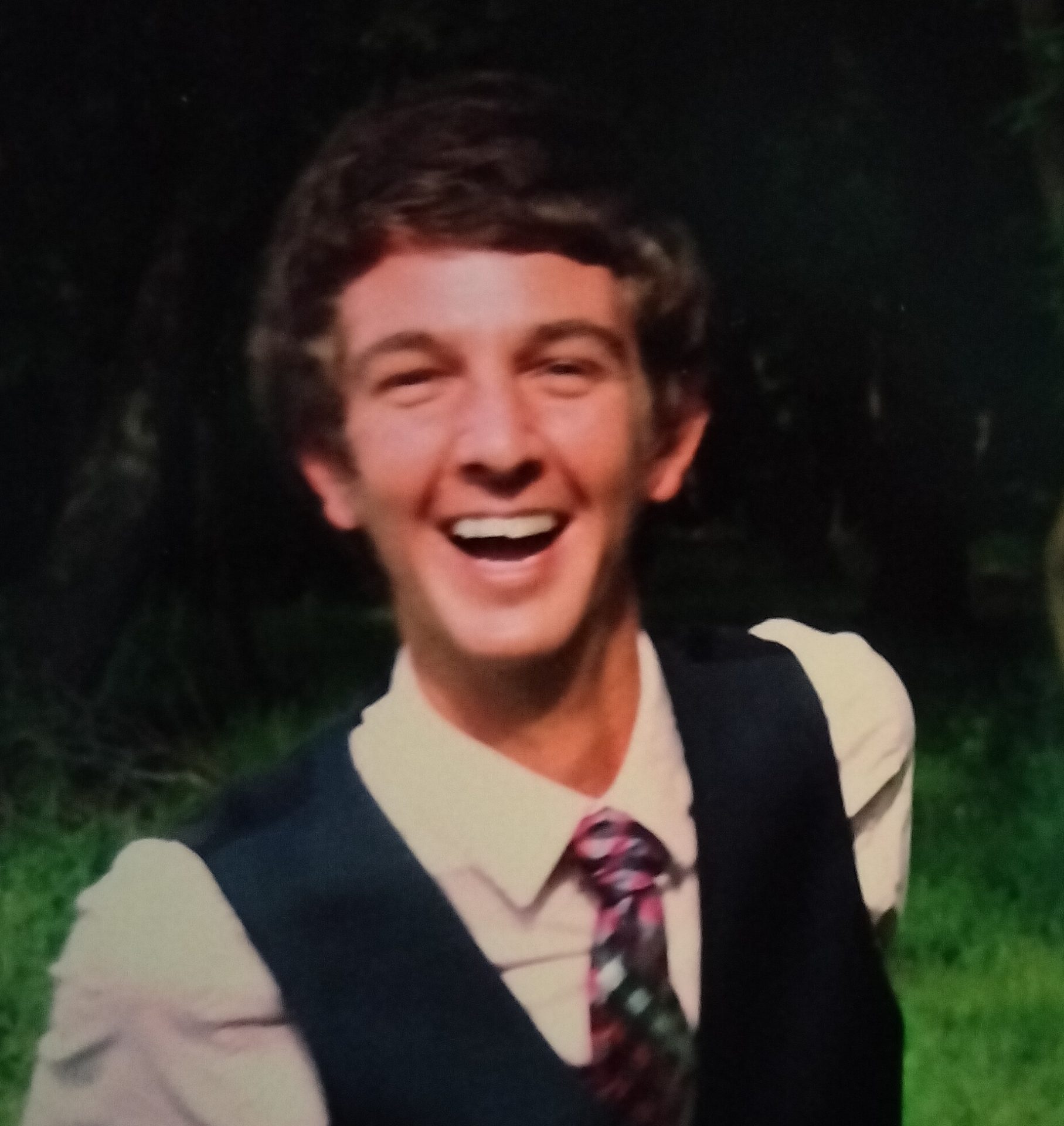
Luke Henkel
Programs coordinator, North America
Chicago, Illinois, USA
Master's Graduate, Climate Justice from Glasgow Caledonian University (Scotland, 2022). I have a background in teaching languages and am a former Divine Word (Verbitas) missionary Brother. I was one of the co-founders of Laudato Si Generation and have been active with the youth and young adult networks in Seattle, Washington and internationally. My Master's thesis focused on Indigenous spirituality and identity in response to climate change in the Philippines, and this is one of my greatest interests. In my spare time find me biking, hiking, learning languages, doing yoga, running, or exploring a new place!

Maciej Gadomski
Senior Operations Manager
Connecticut, United States of America Maciej serves as the Senior Operations Manager, helping support operational growth for LSM. He previously worked with other Catholic NGOs, focusing on membership and organizational development, programming, and international operations. He currently also serves on the staff for the American delegation of the International Military Pilgrimage (PMI). He has degrees from Quinnipiac University, and speaks fluent Polish, English, and conversational French. A native of Poland, Maciej now resides in the United States (Connecticut), where he lives with his German Shepherd, Boris, and spends most of his free time hiking or kayaking.

Mateusz Bednarkiewicz
Senior Advisor at LSM Poland - Światowy Ruch Katolików na rzecz Środowiska
Warsaw, Poland
Mateusz is an assistant professor in the theater department of the Warsaw Academy and a director cooperating with theaters in Warsaw and Poznan. His work has won prizes at the Polish Feature Film Festival and Teatroteka Fest, and was nominated for an Orły award. He is a member of the Polish and European Film Academy, president of the Parliamentary Education Foundation, and a long-standing collaborator with Polish and international non-governmental organizations. Mateusz is a graduate in philosophy of the University of Warsaw and the directing department of AT Warsaw Drama Academy.
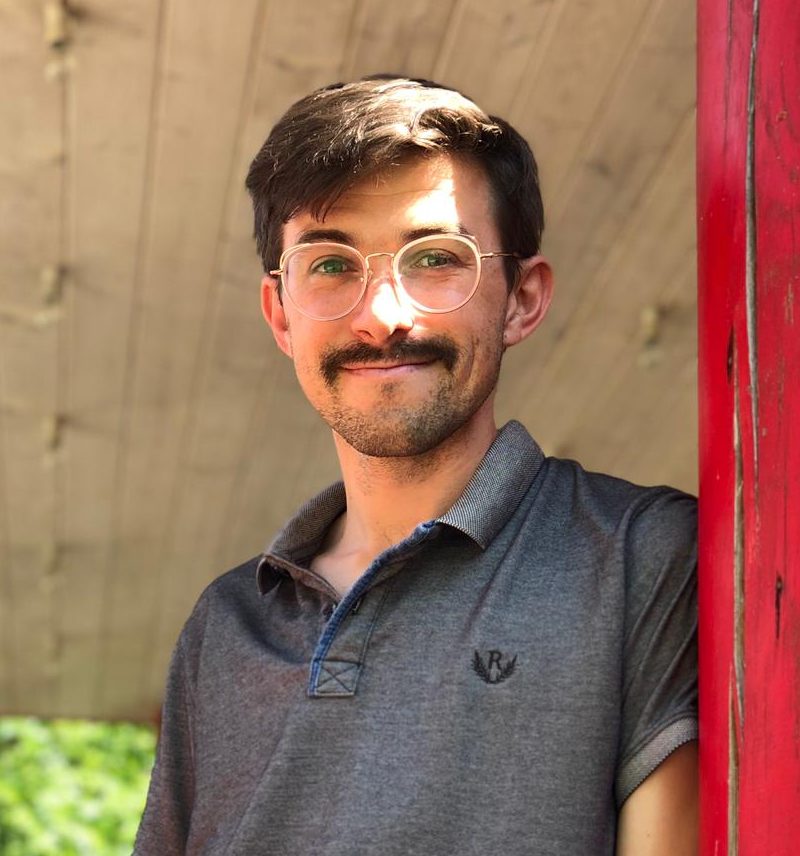
Mateusz Piotrowski
Programme Advisor
Warsaw, Poland
Mateusz has 10 years of experience in running social campaigns. He is a co-founder of the “Folkowisko” Association and the Polish Humanities Crisis Committee. He was also a co-creator of the economic education program “Labor market: manual”. He is a Doctor of Theology and Religious Studies from Nottingham University. He lives with his wife Magdalena and daughter Aniela in Warsaw.

Mayra Santos
Program Coordinator | Portuguese Speak Countries
Piauí, Brazil
Mayra Santos is a Biologist, Master in Zoology working in the area of conservation and biodiversity, and is a PhD student of Ecology and Biodiversity Conservation. Mayra worked as a professor in the area of Biology at a University (Federal Institute of Piauí - IFPI). Mayra serves as National Secretary for YOUFRA’s Northeast Area A – Youth Franciscan of Brazil, and as Regional Secretary for YOUFRA Ceará and Piauí States (Brazil). She also served as Secretary for Human Rights, Justice, Peace and Integrity of Creation (DHJUPIC) in regional dimensions at YOUFRA Brasil and in services for the local YUFRA fraternity in her hometown. Currently, she lives in Floriano, Brazil.
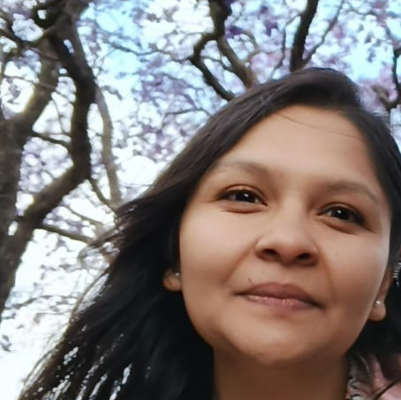
María Cristina Chuquimarca Mosquera
Assistant Manager for Ibero-America
Quito, Ecuador Cristina is a sociologist with a specialization in development from the Pontifical Catholic University of Ecuador. She completed the Latin American Ignatian University Leadership Program offered by AUSJAL and the Leadership and Health Promotion Program. She holds a master's degree in Social Science with a specialization in Sociology from The College of México (El Colegio de México), and is currently pursuing a doctoral degree in Social Science at The College of México. She also has extensive training in Collaborative Research methodologies (CLACSO). She has worked as the Academic Coordinator of the International Program for Volunteer Management and Organizational Strengthening, Voluntades+, as a researcher for nine years in the Democracy, Security, and Peace Program at the Pontifical Catholic University of Ecuador, and as the Coordinator of the School of Territorial Identity and Sociopolitical Advocacy in the Ecuadorian Amazon, Social Pastoral Caritas Ecuador. She has several publications and presentations on extractivism, human security, democracy, university participation, and volunteering. She has been a scholarship recipient from the Mexican government - CONACYT, CLACSO - CEDLA, and a fellow in the CONACYT-OAS-AMEXCID program.
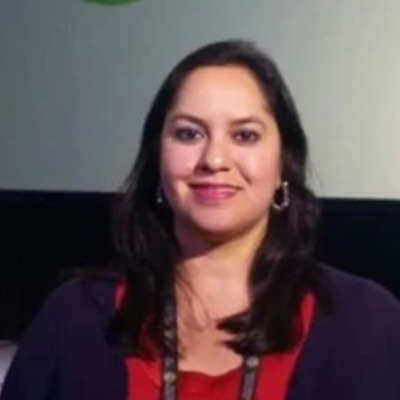
Maria Trevino
North America Program Coordinator (Texas and New Mexico)
Texas, USA
Maria Trevino is the Program Coordinator of North America focusing on Texas and New Mexico. She has a bachelor’s degree in marketing from Tec of Monterrey. After getting involved in the social and environmental sector, she discovered that there is a great need to care for creation and she is committed to raising awareness and acting to solve environmental challenges.

Mariel Caldas
Eco-Conversion Programs Assistant, Buenos Aires, Argentina
Mariel is a teacher, doctoral student in Pastoral Theology and researcher. She is a wife and mother of two children. She loves plants, animals, natural environments, and art. She is an instructor of Qi Gong, Taijiquan, and art therapy.
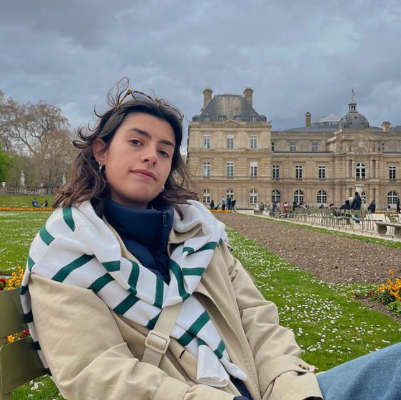
Marina Mora de Alvear
Europe Communications Officer
Córdoba, Andalusia, Spain. Marina studied International Relations and Communication at Loyola University in Cordoba, with a specialization in media and international cooperation. Though she is young, she has gained experience in public organizations related to public diplomacy and international cooperation, such as the Andalusian Agency for International Cooperation and the Evaluation Division of the Spanish Ministry of Foreign Affairs. She has always been actively involved in different Catholic youth associations in her city, helping and managing their communication. Thanks to all these experiences, she is skilled in handling a variety of editing and content creation programs. Additionally, she has complemented her education with theoretical courses on communication strategy for social media, and practical experience through various Catholic volunteer work in the Holy Land, Paraguay, and Argentina.
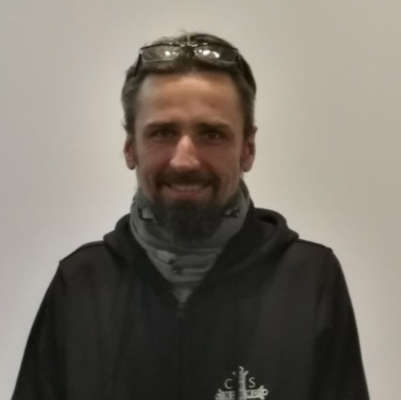
Mariusz Zatylny
Energy Solidarity Project Manager
Łódź, Poland Architect, member of the Chamber of Architects of the Republic of Poland, founder of the Polish Natural Building Association; Since 2019, a benedictine oblate (lay member of the monastic community); earlier, until 2012, a long-time member of the ecumenical community Chemin Neuf with experience of evangelization in France, the Czech Republic, the Democratic Republic of the Congo and in Poland). Involved in the development of deep integral ecology in dialogue with the contemplative traditions of other religions and cultures of indigenous peoples. Happy husband and father of 5 wonderful children. In the Polish team of the Laudato Si' Movement, he is responsible for the energy solidarity project - "Warm House - Warm Church".
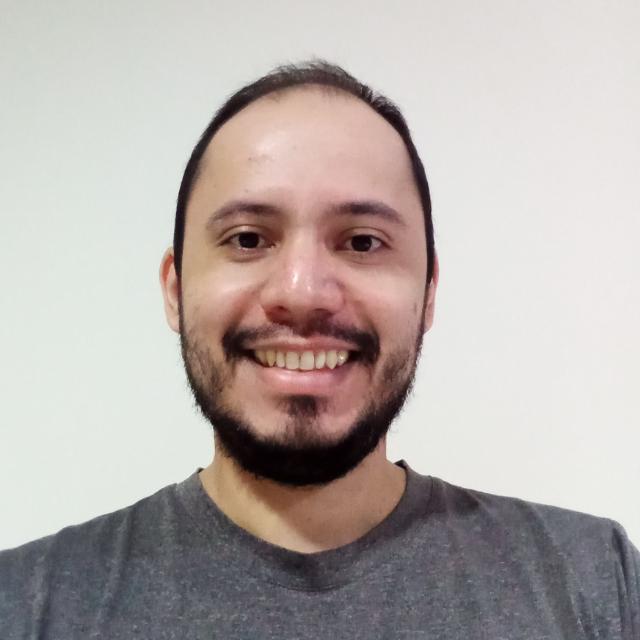
Marcos Campos
Brazilian Administrative Assistant
Rio Verde, Brazil
Marcos is 31 years old. He is from Rio Verde, Goiás, Brazil and currently lives in Rio Verde. He holds a degree and a master's degree in Social Sciences from the Federal University of Uberlândia. Currently he is also a teacher of basic education. He began his social activism in the student movement and it was from there that he joined the Pastoral Land Commission (CPT), where he began to work with social movements fighting for land and urban struggle. It was during this process that he also became involved with the Franciscan Action for Ecology and Solidarity (AFES) and from there came the opportunity to be part of the Laudato Si Movement, acting as an administrative assistant.

Marco Vargas
Graphic Designer
Quito, Ecuador
Marco has an engineering degree in Visual Design, specializing in motion design at the Polytechnic School of Chimborazo (ESPOCH) and is passionate about creating and learning.
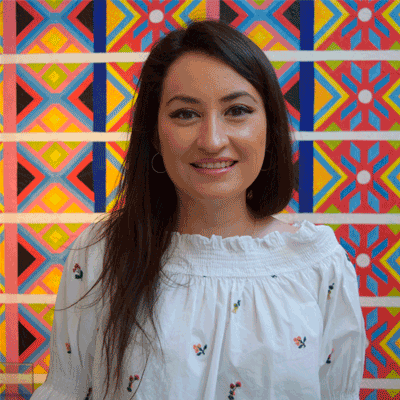
Maureen Villanueva Lecuona
Special Projects Engagement Manager
Monterrey, Mexico
Maureen is convinced that change happens when we work together in communion, therefore she has sought to collaborate in projects that cares for the people and the planet achieving together a better world for all. She has experience in projects that involves the principles of sustainability in the educational, organizational, and religious sector, addressing the areas of design, infrastructure, certifications, reporting, programs, education, and Geographic Information Systems. She has a bachelor’s degree in Architecture and a master’s degree in Organizational Development and Change.
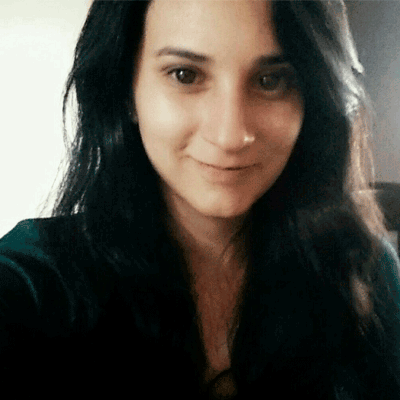
Natalia Cevallos
Administrative Assistant
Quito, Ecuador
Natalia works as an Administrative Assistant, she holds a bachelor’s degree in International Business and International Relations from the Pontifical Catholic University of Ecuador. She formerly worked with LSM in different roles such as intern, translator, and freelance interpreter. She speaks Spanish, English, and Italian.
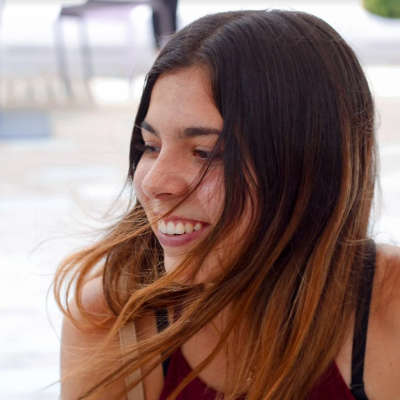
Paola Zabala
Content Curator
Quito, Ecuador
Paola works as a Content Curator. She's from Venezuela and lives in Ecuador. She has a degree in Journalism from the University of the Americas (UDLA) in Ecuador. She speaks Spanish and English (intermediate).

Piotr Abramczyk
Director at LSM Poland - Światowy Ruch Katolików na rzecz Środowiska
Warsaw, Poland
Graduated from the University of Reading, Piotr is a professional meteorologist with a special interest in climate change. Bringing together the scientific knowledge with a passion for integral ecology as taught by the Catholic Church, he works towards greater involvement of faith communities in the care for our common home.
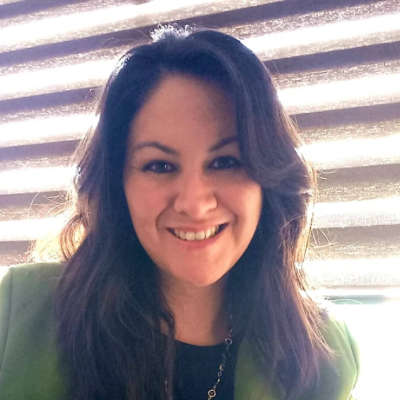
Priscila Vintimilla
Data Manager
Quito, Ecuador(+ 20) Years of experience in Marketing and Communications field, Digital Marketing and Web Analytics Specialist. She has worked for different brand industries by developing strategies, measuring results and working with different digital multichannel platforms. ¨LSM is the place where you work with love combined with your faith and values towards a great purpose: care of our common home.¨ She has worked with LSM since 2020.
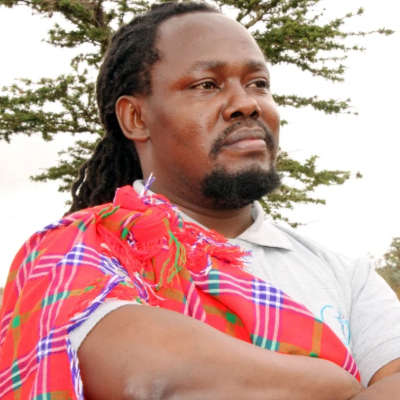
Prince Papa
Programms Manager-Africa
Nairobi, Kenya
Artivist, justice campaigner and co-founder of 350 Kenya Power Shift, (a non-violent justice youth movement in Kenya). He has over 15 years experience in movements building, coalitions management and campaigning both offline and online. He previously worked with 350.org as Sub Saharan Field organizer, working directly with frontline communities fighting the fossil fuels industry. He is also a commissioner with the Catholic Justice and Peace Commision-Kenya. He currently serves as the Board Chairperson for deCOALonize Kenya coalition.
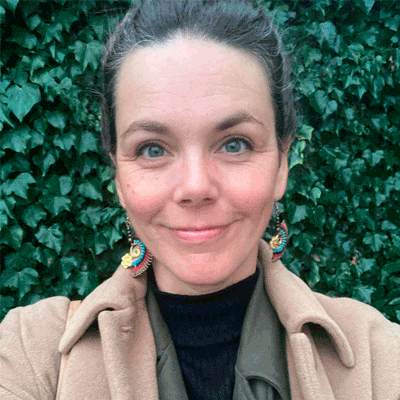
Rebecca Elliott
Senior Director of Strategy, Planning, and Special Projects
Virginia, United States of America
Rebecca is grateful to work with a phenomenal team of colleagues and partners, collaborating to deliver strategic initiatives that make a measureable difference for our common home by galvanizing action among the world's 1.2 billion Catholics and their allies. She speaks English and Spanish.
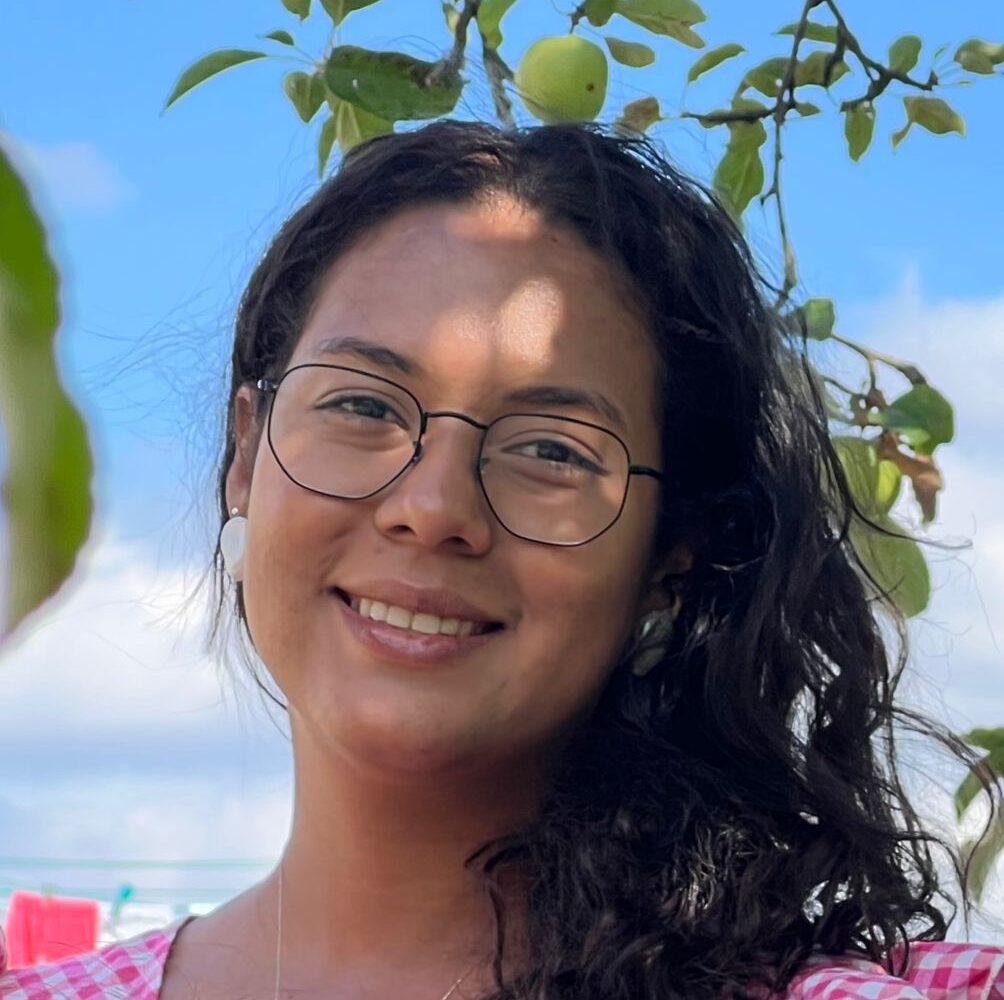
Regina Luján
Community Manager
Tegucigalpa, Honduras
Regina is part of the LSM communications team. She studied Tourism Business Administration, has a certificate in Fundamentals of Climate Change Management, is a Climate Reality Climate Leader and a Laudato Si Animator. She was responsible for Networks and Communications of the Honduras chapter for two years. Regina is passionate about Sustainable Tourism and the care of the Common Home.
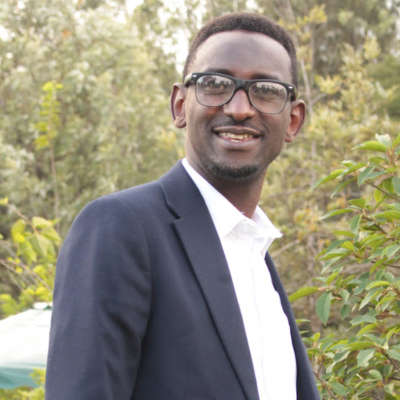
Steeven Kezamutima
Programs Coordinator, Francophone Africa
Nairobi
He is a Lay Franciscan , a Laudato Si animator and member of Laudato Si Generation coordinating team. He has developed a strong network around Africa.He has worked as a Regional Program Manager at the JPIC- Franciscans in Africa.Artist-musician and climate activist, he has developed expertise in environmental governance, biodiversity, peace and human rights.

Steven Salido Fisher
Communications Manager
Mexico City Steven, with roots in Chicago and Mexico City, holds a University of Notre Dame BA in political science and peacebuilding, which led to studies in Kolkata, Sarajevo, and Jerusalem. From working in migrant shelters to disaster relief work in Alaska, his professional training is rooted in hospital chaplaincy with a multifaith theological degree at Harvard. Throughout his career, Steven has done free-lance writing and communications consulting for non-profit clients via The Soze Agency.
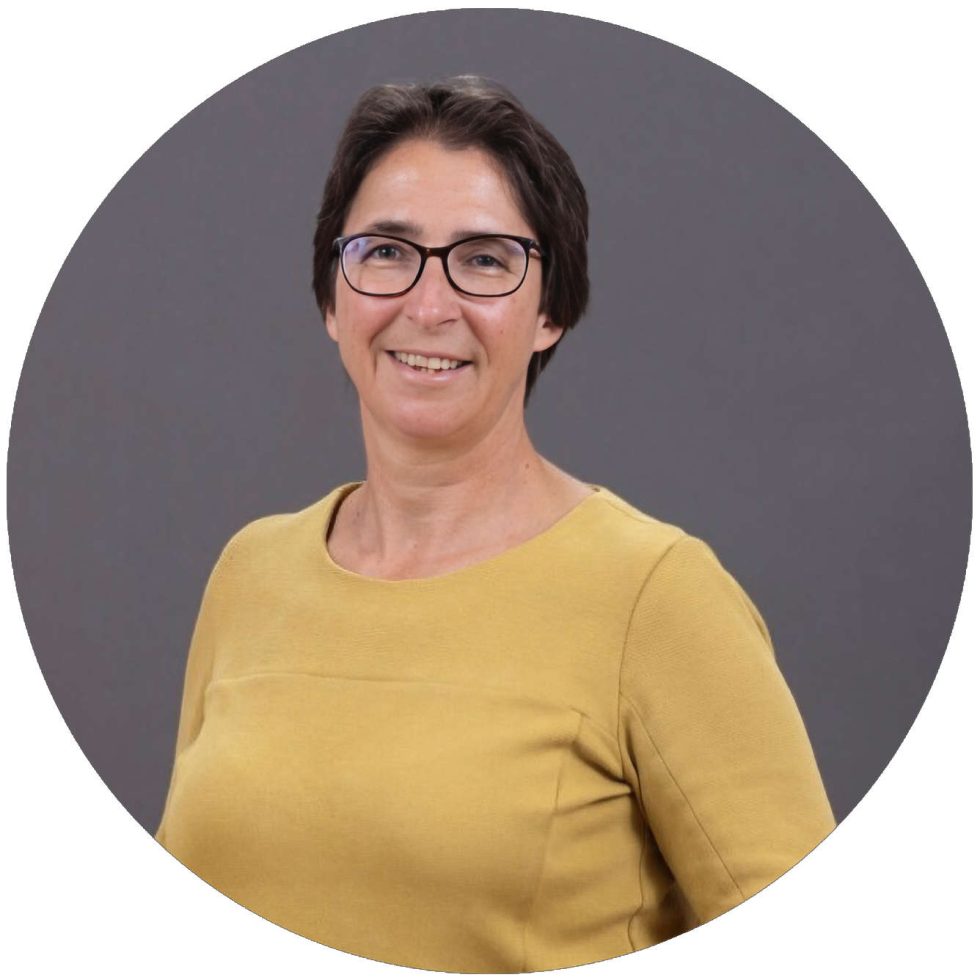
Susana Réfega
Executive Director
Lisbon, Portugal Susana has extensive leadership experience in the Catholic international development and civil society sector, including 12 years as Executive Director of the Faith and Cooperation Foundation in Portugal, several leadership roles with CAFOD (UK), CIDSE and since 2012 as a volunteer with the Association for Ecology and Spirituality Casa Velha. She is a Professor at Lisbon University and Portuguese Catholic University in International Development Studies. She holds a PhD in Molecular and Cellular Biology from René Descartes University, Paris and Master's Degree in Development, International Cooperation and Humanitarian Aid from Sorbonne University.
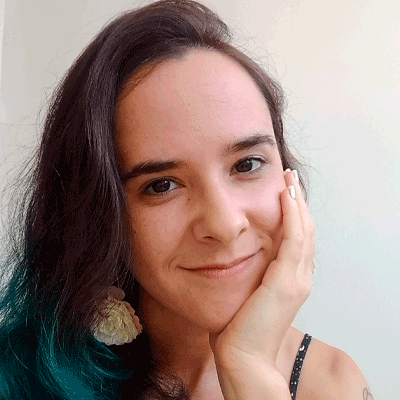
Suzana Moreira
Eco-Conversion Programs Manager
Rio de Janeiro, Brazil
Suzi is a Laudato Si' Animator, a socioenvironmental activist, a zero-waste ambassador, and a music and stilts enthusiast. She also holds a Master's degree in Systematic Pastoral Theology from the Pontifical Catholic University of Rio de Janeiro and worked for 10 years as a freelance translator and interpreter in English, Portuguese and Spanish.
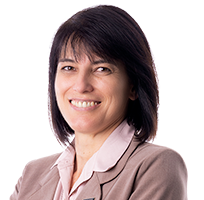
Sr. Cláudia Chesini
Religious Outreach Coordinator
Brasilia, Brazil
Sr. Cláudia Chesini, religious of the Associação Congregação Santa Catarina, has a degree in Pedagogy from União das Faculdades de Criciúma and a master's degree in Production Engineering from Universidade Federal de Santa Maria. She has experience in Production Engineering, working mainly on the following themes: education, global compact on education, pastoral, sustainability, integral ecology, public policies and evaluation of the education system. She brings to LSM years of experience in the educational sector leading high performance team and team building and joins as the Religious Outreach Coordinator in the Special Projects Team.
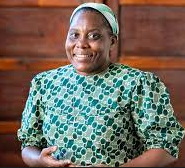
Sr. Nathalie Kangaji
Religious Outreach Coordinator
Democratic Republic of Congo
With a degree in Public Law, she has worked for nearly 20 years in the defense of the underprivileged and has practiced her profession as a defender of human rights and local mining communities. She has been a religion teacher and a women's rights activist. As part of her professional activity she has also served as Deputy Executive Secretary of the Episcopal Commission for Justice and Peace as well as in charge of the women's dynamic for peace for the same institution. Sister Nathalie speaks French and Swahili.
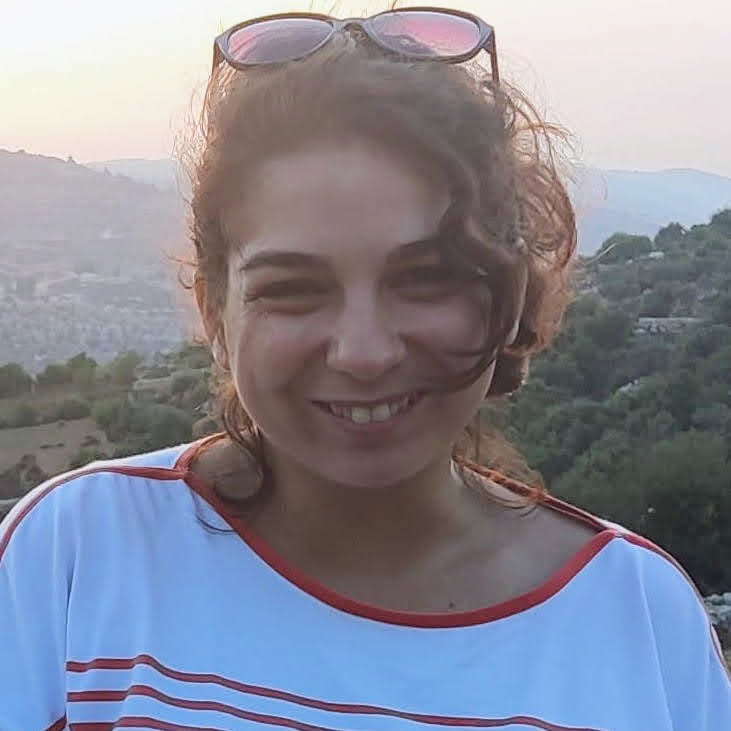
Veronica Coraddu
Laudato si' Animators and Circles Coordinator
Ladispoli, Rome, Italy Veronica joined LSM team in November 2023, and has been an LS Animator since May 2022. Sardinian, Roman by adoption, citizen of the world, she has lived and worked in Tanzania, South Sudan and Palestine, where she opened a LS Circle in Bethlehem. She is active in the LS Sacred Heart Circle in Ladispoli and in the Missionary Center of her diocese. Married to Fabio, she is mother to Mattia and Letizia.
Secretariat
Advisory Council
Members of the Advisory Council serve as a public witness of the Church’s commitment to creation care. Members have the opportunity to shape how the global Church can best address the current ecological crisis.
FAQ
- What is LSM?
- What is the mission of LSM?
- How is LSM formed?
- What are the strategic objectives of LSM?
- What projects is LSM working on?
- What is the legal entity of LSM?
- How is LSM funded?
- What is LSM's relationship with the Catholic Church and the Holy See?
We are a Catholic Movement, guided by the Holy Spirit, committed to protecting our common home, God’s creation, from the climate emergency and ecological crisis.
To inspire and mobilize the Catholic community to care for our common home and achieve climate and ecological justice.
The Movement is made up of more than 8,000 Laudato Si’ Animators and nearly 900 Member Organizations, present in 115 countries on five continents, and organized into 30 chapters, who work every day to bring Laudato Si’ to life.
- Ecological conversion: To encourage a change of heart (conversion) of Catholics and motivate a passionate concern for our common home, making care for creation a priority.
- Total sustainability: To help the Church and its faithful to lead by example, embodying the motto “less is more” and reducing its carbon footprint to zero, in line with the urgency of the climate emergency and ecological crisis.
- Advocacy: To mobilize the Church to raise its prophetic voice for climate and ecological justice, calling for bold policies to meet the Paris Agreement target of no more than 1.5°C and to stop the biodiversity collapse.
According to the strategic objectives, LSM is working on several programs:
- Programs for ecological conversion:
- Laudato Si’ Circles. A global community of small groups that meet regularly to deepen their relationship with God as Creator and with all members of creation.
- Laudato Si’ Contemplation Training. A 5-week training, to be introduced to meditation and contemplative practices as a way of prayer.
- Season of Creation. An annual event from September 1 to October 4 to deepen our ecological conversion.
- Sustainability programs:
-
- Laudato Si’ Action Platform: a project of the Vatican’s Dicastery for the Promotion of Integral Human Development and facilitated by LSM, for institutions, communities and families to learn and grow together as we journey toward full sustainability in the holistic spirit of integral ecology.
- Advocacy programs:
-
- Biodiversity and Climate Crisis.
- Zero Fossil Fuels
- Divestment
- Fossil Fuel Non-Proliferation Treaty
- Carbon Bombs
- Regional advocacy campaigns
Laudato Si’ Movement is registered as a legal entity under U.S. law as a non-profit public charity (501c3).
We are a Movement formed mainly by Catholic faithful, lay people, religious and priests, and Organizations that collaborate with the Mission of the Church.
We are guided by the Social Doctrine of the Church, its Magisterium and the Holy Scriptures.
And, in order to fulfill our mission, we collaborate closely with the different bodies of the Church (dioceses, episcopal conferences, Vatican dicasteries, etc.) in fidelity to the Holy Father and always in a spirit of synodality and listening.
FAQ
What is LSM?
What is the mission of LSM?
How is LSM formed?
What are the strategic objectives of LSM?
- Ecological conversion: To encourage a change of heart (conversion) of Catholics and motivate a passionate concern for our common home, making care for creation a priority.
- Total sustainability: To help the Church and its faithful to lead by example, embodying the motto “less is more” and reducing its carbon footprint to zero, in line with the urgency of the climate emergency and ecological crisis.
- Advocacy: To mobilize the Church to raise its prophetic voice for climate and ecological justice, calling for bold policies to meet the Paris Agreement target of no more than 1.5°C and to stop the biodiversity collapse.
What projects is LSM working on?
According to the strategic objectives, LSM is working on several programs:
- Programs for ecological conversion:
-
- Laudato Si’ Circles. A global community of small groups that meet regularly to deepen their relationship with God as Creator and with all members of creation.
- Laudato Si’ Contemplation Training. A 5-week training, to be introduced to meditation and contemplative practices as a way of prayer.
- Season of Creation. An annual event from September 1 to October 4 to deepen our ecological conversion.
- Sustainability programs:
-
- Laudato Si’ Action Platform: a project of the Vatican’s Dicastery for the Promotion of Integral Human Development and facilitated by LSM, for institutions, communities and families to learn and grow together as we journey toward full sustainability in the holistic spirit of integral ecology.
- Advocacy programs:
-
- Biodiversity and Climate Crisis.
- Zero Fossil Fuels
- Divestment
- Fossil Fuel Non-Proliferation Treaty
- Carbon Bombs
- Regional advocacy campaigns
What projects is LSM working on?
Laudato Si’ Movement is registered as a legal entity under U.S. law as a non-profit public charity (501c3).
How is LSM funded?
LSM is funded by private donors, institutions and individuals who identify with our mission and freely contribute their resources to make our work possible.
LSM does not receive any financial support from the Vatican.
What is LSM's relationship with the Catholic Church and the Holy See?
We are a Movement formed mainly by Catholic faithful, lay people, religious and priests, and Organizations that collaborate with the Mission of the Church.
We are guided by the Social Doctrine of the Church, its Magisterium and the Holy Scriptures.
And, in order to fulfill our mission, we collaborate closely with the different bodies of the Church (dioceses, episcopal conferences, Vatican dicasteries, etc.) in fidelity to the Holy Father and always in a spirit of synodality and listening.
Work With Us
To inspire and mobilize the Catholic community to care for our common home and achieve climate and ecological justice.

